General News
May and June used to be My Months....
05th May 2020
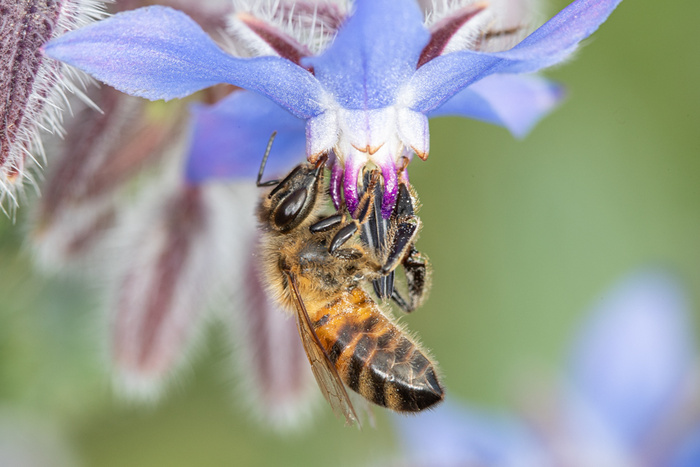
Some time ago, Karen wrote a diary for every month of the year in terms of the activities undertaken on her plots. Whilst some things have changed, for example there is no sport as we under lockdown, - (and the bloke with the camera is actually active on the plots with project 63 in addition to bugs and beastie snapping) - the general migration from dig to no dig, and bearing in mind this little list is not exhaustive, thought it was worth re producing.
A set of notes for every month can be found on the website under the heading 'The Allotment Year' and can be downloaded as required.
May and June are truly my months. No sign of the other half as the cricket season and motor racing are in full swing, as well as local gymnastics by the Blue Falcons Gymnastics Display Team. (If you haven’t seen them, you should – awesome). If by chance there isn’t any sport on anywhere, there is a distinctly improved possibility that he may be spied on the allotment chasing various insects, flies, bugs, and can be located by listening for the occassional cuss as the models don’t stay still long enough or pose for the camera, unlike the bee in the image above, who was very sporting and camera savvy!
The plots are now becoming visually more appealing as a covering of growth replaces the spartan earthy look of the winter months, and trees in blossom. May is also the time to step back, ponder, and consider whether there is anything that has been forgotton in terms of sowing or planting particular crops. It’s best to consider this now as it will be too late to overcome later. The severity and number of overnight frosts should decrease, although it is still wise to keep a watch on the local weather forecasts (for ease the allotment association web site has a direct feed from the Met Office on the home page).
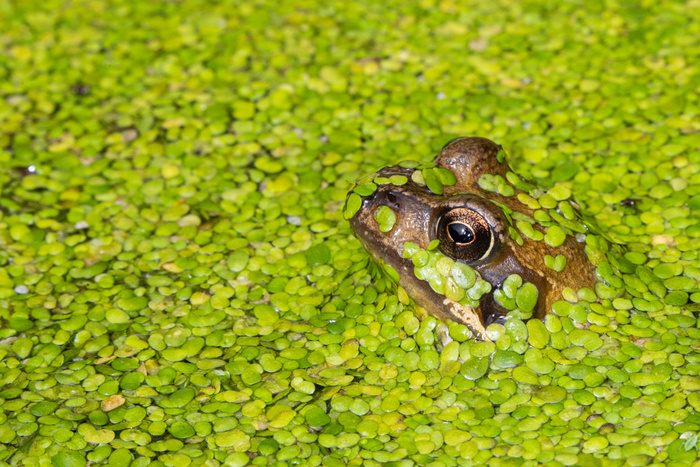
My usual jumbled notes on activities that I undertake on the plots can be found underneath together with the most important vegetable jobs to be completed. Please bear in mind that some of the activities may have been mentioned at the end of April, or even at the beginning of June, and some depend on the prevailing weather conditions. For example 2013 – this year – has been an exceptionally cold start to the growing season, and the Asparagus growing and cutting may well be deferred for a couple of weeks.
1. Apply growmore over runner bean area
2. Sow parsley outside
3. Dig up old purple sprouting broccoli
4. Apply straw around strawberries
5. Blueberries, apply tomato feed (potash) regularly
rom flowering until fruit ripens
6. Plum – water if required, rarely needs pruning – just
remove any damaged branches
7. Plant out tomatoes grown undervcover 2nd week onwards after hardening off. However, this is quite early, and probably best to plant towards the end of the month in case of frost, unless able to cover with fleece. As already mentioned 2013 has seen a harsh winter and everything is generally 2-3 weeks behind normal schedule.
8. Plant more carrots in raised bed and open ground
9. Stop cutting asparagus at end of May or beginning of June, and all the time keep a close look out for the Asparagus beetle which is prevalent. (image to the
right)
10. Feed cucumber with high nitrgoen feed away from
stem (dried blood) occassionally water with
tomorite. Cucumbers need nitrogen in the early stages for increased leaf growth, and then potash feed once the first blossoms are witnessed to encourage fruit growth.
11. Pinch tip of cucumber out when reached high enough, once side shoots produced 3 pairs of leaves pinch out tops
12. Water mange tout and peas if required, remove fleece / hoops as mange tout grow but protect with netting from pigeons
Last month we mentioned planting and thinning out runner beans, having prepared the area first. Runner beans benefit from well prepared ground with plenty of well - rotted manure or other organic matter dug in. Also mentioned was the preparation of a sturdy framework to allow the plants to grasp and grow, and an example of just one style of frame can be seen in the image under.
Last month I also commented about the planting of sweet corn, and the general hazard on our allotments caused by Badgers that are inextricably drawn to this crop.
Having watched the weather closely through the month and made a conscious decision (if this is possible in the UK) that the worst is behind us, planting outside of tomatoes, courgettes, pumpkins and other tender vegetables that have started life indoors can be undertaken, that is if you haven’t already planted. (mid to end of month, and ensure that you have a ready supply of fleece just in case).
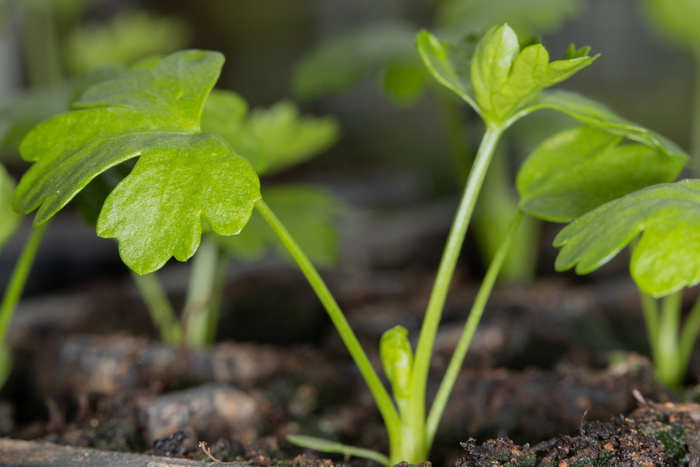
One of the first things to do is to place straw all - round the strawberries and then carefully cover with a net. I tend to loosely stake the net all the way around the perimeter so that the net is kept sufficiently away from the plants which may help to prevent the birds from pecking through.
When sowing parsley, I take a kettle full of boiling water where I am going to sow and pour over the soil. I then sow the seed on top and cover very thinly with soil. I then gently re water with warm (not boiling) water, and then cover with a cloche or plastic bell cover. The seeds take quite a while to germinate, and I keep moist as need be.
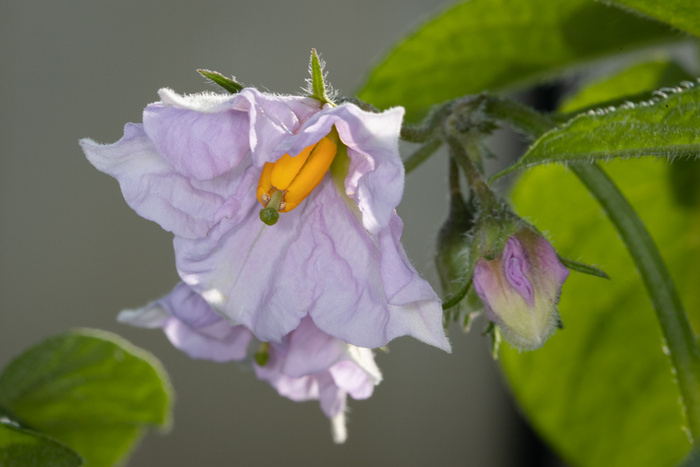
Last month we finished planting our potatoes. As the potatoes begin to show through the soil, it is essential until the beginning of June, or the possibility of frost ceases, to earth up. This involves raking earth over the top of the growing plants to provide added protection. Repeat at one or two week intervals or as necessary. This process kills weeds, helps prevent blight and prevents the tubers from being exposed to the light and turning green and poisonous.
Finally, during the course of this month the trusty lawn mower gets its first airing of the year to tidy up all the paths and surrounding green areas, together with a general tidy up of the edges. This also heralds and is co – incident with the start of the perpetual allotment holder’s battle against weeds.
Finally, finally, the wind tends to rush across the allotment, which dries out the soil pretty quickly. The water has generally been turned back on and prudent and regular watering (if it isn’t continually pouring with rain) is a must.
05th May 2020
In: Features

Some time ago, Karen wrote a diary for every month of the year in terms of the activities undertaken on her plots. Whilst some things have changed, for example there is no sport as we under lockdown, - (and the bloke with the camera is actually active on the plots with project 63 in addition to bugs and beastie snapping) - the general migration from dig to no dig, and bearing in mind this little list is not exhaustive, thought it was worth re producing.
A set of notes for every month can be found on the website under the heading 'The Allotment Year' and can be downloaded as required.
May and June are truly my months. No sign of the other half as the cricket season and motor racing are in full swing, as well as local gymnastics by the Blue Falcons Gymnastics Display Team. (If you haven’t seen them, you should – awesome). If by chance there isn’t any sport on anywhere, there is a distinctly improved possibility that he may be spied on the allotment chasing various insects, flies, bugs, and can be located by listening for the occassional cuss as the models don’t stay still long enough or pose for the camera, unlike the bee in the image above, who was very sporting and camera savvy!
The plots are now becoming visually more appealing as a covering of growth replaces the spartan earthy look of the winter months, and trees in blossom. May is also the time to step back, ponder, and consider whether there is anything that has been forgotton in terms of sowing or planting particular crops. It’s best to consider this now as it will be too late to overcome later. The severity and number of overnight frosts should decrease, although it is still wise to keep a watch on the local weather forecasts (for ease the allotment association web site has a direct feed from the Met Office on the home page).

My usual jumbled notes on activities that I undertake on the plots can be found underneath together with the most important vegetable jobs to be completed. Please bear in mind that some of the activities may have been mentioned at the end of April, or even at the beginning of June, and some depend on the prevailing weather conditions. For example 2013 – this year – has been an exceptionally cold start to the growing season, and the Asparagus growing and cutting may well be deferred for a couple of weeks.
1. Apply growmore over runner bean area
2. Sow parsley outside
3. Dig up old purple sprouting broccoli
4. Apply straw around strawberries
5. Blueberries, apply tomato feed (potash) regularly
rom flowering until fruit ripens
6. Plum – water if required, rarely needs pruning – just
remove any damaged branches
7. Plant out tomatoes grown undervcover 2nd week onwards after hardening off. However, this is quite early, and probably best to plant towards the end of the month in case of frost, unless able to cover with fleece. As already mentioned 2013 has seen a harsh winter and everything is generally 2-3 weeks behind normal schedule.
8. Plant more carrots in raised bed and open ground
9. Stop cutting asparagus at end of May or beginning of June, and all the time keep a close look out for the Asparagus beetle which is prevalent. (image to the
right)
10. Feed cucumber with high nitrgoen feed away from
stem (dried blood) occassionally water with
tomorite. Cucumbers need nitrogen in the early stages for increased leaf growth, and then potash feed once the first blossoms are witnessed to encourage fruit growth.
11. Pinch tip of cucumber out when reached high enough, once side shoots produced 3 pairs of leaves pinch out tops
12. Water mange tout and peas if required, remove fleece / hoops as mange tout grow but protect with netting from pigeons
Last month we mentioned planting and thinning out runner beans, having prepared the area first. Runner beans benefit from well prepared ground with plenty of well - rotted manure or other organic matter dug in. Also mentioned was the preparation of a sturdy framework to allow the plants to grasp and grow, and an example of just one style of frame can be seen in the image under.
Last month I also commented about the planting of sweet corn, and the general hazard on our allotments caused by Badgers that are inextricably drawn to this crop.
Having watched the weather closely through the month and made a conscious decision (if this is possible in the UK) that the worst is behind us, planting outside of tomatoes, courgettes, pumpkins and other tender vegetables that have started life indoors can be undertaken, that is if you haven’t already planted. (mid to end of month, and ensure that you have a ready supply of fleece just in case).

One of the first things to do is to place straw all - round the strawberries and then carefully cover with a net. I tend to loosely stake the net all the way around the perimeter so that the net is kept sufficiently away from the plants which may help to prevent the birds from pecking through.
When sowing parsley, I take a kettle full of boiling water where I am going to sow and pour over the soil. I then sow the seed on top and cover very thinly with soil. I then gently re water with warm (not boiling) water, and then cover with a cloche or plastic bell cover. The seeds take quite a while to germinate, and I keep moist as need be.

Last month we finished planting our potatoes. As the potatoes begin to show through the soil, it is essential until the beginning of June, or the possibility of frost ceases, to earth up. This involves raking earth over the top of the growing plants to provide added protection. Repeat at one or two week intervals or as necessary. This process kills weeds, helps prevent blight and prevents the tubers from being exposed to the light and turning green and poisonous.
Finally, during the course of this month the trusty lawn mower gets its first airing of the year to tidy up all the paths and surrounding green areas, together with a general tidy up of the edges. This also heralds and is co – incident with the start of the perpetual allotment holder’s battle against weeds.
Finally, finally, the wind tends to rush across the allotment, which dries out the soil pretty quickly. The water has generally been turned back on and prudent and regular watering (if it isn’t continually pouring with rain) is a must.
Hitting the Ground Running
29th April 2020
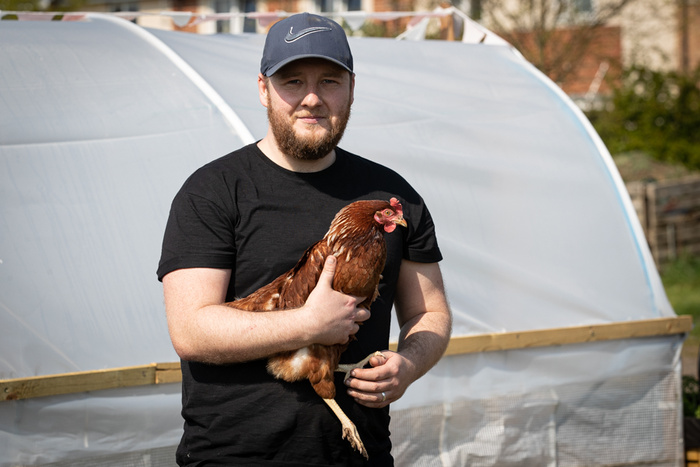
Hi Alex, thanks again for offering up an insight into your activities. You kindly participated last year with an original article about the start of your journey, and then along with our fellow 'Allotmenteers' a further piece in terms of what was at the time working well for you all.
Having now spent a full year, how would you sum up progress and the aspirations for this year and beyond
After a really up and down season I’m looking to hit the ground running this year, I’m trying loads of different things - from new growing techniques to a more varied selection of crops, I’m challenging myself to extend my growing season.
To aid me in extending my growing season I’ve overwintered onions, garlic and broad beans as well as some winter hardy lettuces - they’ve all been relatively successful so far which should hopefully mean an early harvest this year! My poly tunnel is fixed with a new cover which will also help with extending my summer both now and in October/November.
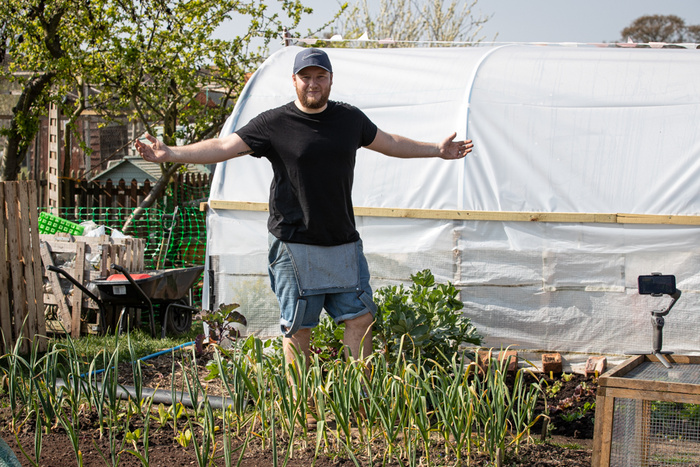
I’m starting nearly all my plants indoors in seed cell trays and I’m trying the multi-sow technique this year. This should maximise the amount of food I am able to grow in the space I have. Alongside this I’ll be doing a lot more companion and interplanting.
I am slowly converting my entire allotment to the no dig method - this will hopefully improve the quality of my soil and reduce the workload.
I’m trying some new tomato varieties this year as well as some more unusual vegetables such as chickpeas, oca and kalettes. Im hoping to have a bit more success with melons this year as I only managed one last year!
how is the you tube channel going. You seem to have been really busy and Mrs L has binge watched the series?
It's going really well - I have quite a following now across YouTube and Instagram. I am always working on new content to share with people online. I love that even though I’ve only been growing a couple of years, I have learnt so much and can help beginners all around the world!
Any developments planned for social media or other interesting projects?
I had some visits to other allotment sites around Essex panned before social distancing kicked in, I’ll be sharing my experiences on the allotment weekly as I have a little more time to film this year.
Hopefully Ray and Karen have agreed to guest start on a video about project 63.
You mentioned earlier about multi - sow technique? Could you expand a little?
For the newbies - multi-sow is a technique designed to maximise yield in a small space. You use a cell tray to sow more than 1 seed per cell, then plant them out as a clump of seedlings. You allow them to mature as a clump and complete for water and nutrients in the soil. This means they grow at different rates. At maturity you can harvest the larger ones and leave the others in to get a bit bigger. I’ll do a YouTube video on it soon if you want more detail. It saves on thinning out.
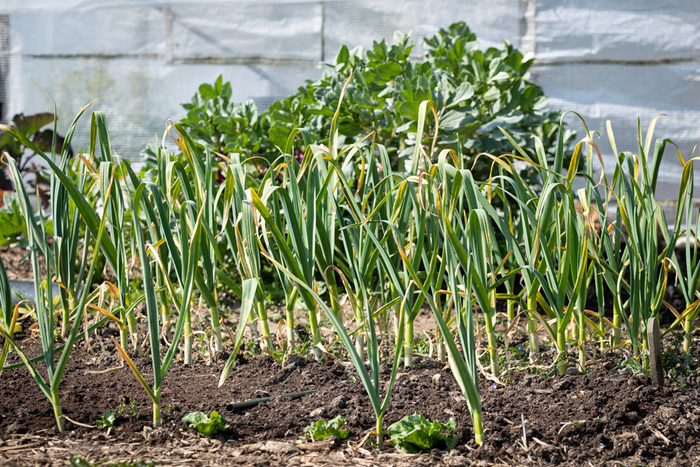
what would you consider your successes last year? apart from the melons any disappointments or things you learned most from?
I had a great year again for tomatoes they really are my favourite! Sungold have quickly become my favourite variety. They are super sweet.
I struggled with peppers last summer, I think with the wet, cooler summer most people struggled.
Finally, last season I managed to grow parsnips and sprouts to go with my christmas dinner - this year I want to go one step further and grow potatoes for it too.
Good luck in your growing season, here’s to a successful 2020!
A big thank you to Alex for sharing his thoughts with the website. Apart from the dubious requirement for Ray and Karen to appear on you tube, we'll catch up again during the year to see how everything has processed. Alternatively check into or subscribe to Alex you tube channel.
29th April 2020
In: Features

Hi Alex, thanks again for offering up an insight into your activities. You kindly participated last year with an original article about the start of your journey, and then along with our fellow 'Allotmenteers' a further piece in terms of what was at the time working well for you all.
Having now spent a full year, how would you sum up progress and the aspirations for this year and beyond
After a really up and down season I’m looking to hit the ground running this year, I’m trying loads of different things - from new growing techniques to a more varied selection of crops, I’m challenging myself to extend my growing season.
To aid me in extending my growing season I’ve overwintered onions, garlic and broad beans as well as some winter hardy lettuces - they’ve all been relatively successful so far which should hopefully mean an early harvest this year! My poly tunnel is fixed with a new cover which will also help with extending my summer both now and in October/November.

I’m starting nearly all my plants indoors in seed cell trays and I’m trying the multi-sow technique this year. This should maximise the amount of food I am able to grow in the space I have. Alongside this I’ll be doing a lot more companion and interplanting.
I am slowly converting my entire allotment to the no dig method - this will hopefully improve the quality of my soil and reduce the workload.
I’m trying some new tomato varieties this year as well as some more unusual vegetables such as chickpeas, oca and kalettes. Im hoping to have a bit more success with melons this year as I only managed one last year!
how is the you tube channel going. You seem to have been really busy and Mrs L has binge watched the series?
It's going really well - I have quite a following now across YouTube and Instagram. I am always working on new content to share with people online. I love that even though I’ve only been growing a couple of years, I have learnt so much and can help beginners all around the world!
Any developments planned for social media or other interesting projects?
I had some visits to other allotment sites around Essex panned before social distancing kicked in, I’ll be sharing my experiences on the allotment weekly as I have a little more time to film this year.
Hopefully Ray and Karen have agreed to guest start on a video about project 63.
You mentioned earlier about multi - sow technique? Could you expand a little?
For the newbies - multi-sow is a technique designed to maximise yield in a small space. You use a cell tray to sow more than 1 seed per cell, then plant them out as a clump of seedlings. You allow them to mature as a clump and complete for water and nutrients in the soil. This means they grow at different rates. At maturity you can harvest the larger ones and leave the others in to get a bit bigger. I’ll do a YouTube video on it soon if you want more detail. It saves on thinning out.

what would you consider your successes last year? apart from the melons any disappointments or things you learned most from?
I had a great year again for tomatoes they really are my favourite! Sungold have quickly become my favourite variety. They are super sweet.
I struggled with peppers last summer, I think with the wet, cooler summer most people struggled.
Finally, last season I managed to grow parsnips and sprouts to go with my christmas dinner - this year I want to go one step further and grow potatoes for it too.
Good luck in your growing season, here’s to a successful 2020!
A big thank you to Alex for sharing his thoughts with the website. Apart from the dubious requirement for Ray and Karen to appear on you tube, we'll catch up again during the year to see how everything has processed. Alternatively check into or subscribe to Alex you tube channel.
The "Seedlings" Story. Plot 51B
28th April 2020
In 2018 the site welcomed a new group, the Marconi Belles who initially took over the plot opposite the trading hut. The plot was definitely in need of some attention, and Foggy Hau and the Belles have kindly agreed to provide their story. With the blessing of the Belles this item is spread over two different posts.......to keep everyone on tenterhooks for the next episode. A huge thank you to the group for sharing with us. All words and pictures courtesy of Foggy Hau and the Marconi Belles.
Plot 51B - Growing more than Fruit and Veg
Hello, we are members of the Marconi Belles Women Institute (WI). When you hear the word’s WI you might think - Jam and Jerusalem, Calendar Girls and baking cakes. In fact, we are charity that raises money and awareness on issues relating to women and their community. Just as importantly we socialise, learn new skills and have a cuppa. Marconi Belles are a relatively new WI in Chelmsford with wide portfolio of activity groups (we call them sub groups) which happen outside of our monthly meetings.
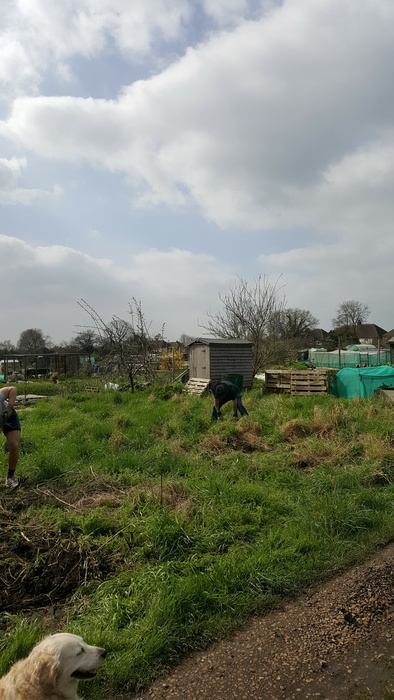
We are The Seedlings - the gardening sub group. We meet up throughout the year to visit gardens together, do volunteer work, have a drink and chat. Then we got talking about growing vegetables and fruit as a communal group … you can guess what happened!
A little group of us Seedlings decided to take on a allotment together in 2017. It was a mixture of practical necessity (as we all have small gardens) whilst sharing knowledge over a cuppa. It took a while for us to find a allotment site that would suit our needs. Then we visited the Melbourne Community site in Summer 2017 we were impressed. The excellent facilities and the welcoming atmosphere really won us over. So we applied for a half plot and waited.
It was a windy afternoon in February 2018 when we finally got to see plot 51B. The plot had the usual debris from neglect and tough woody weeds but we saw the potential. So we had a chat, agreed, signed the contract and our little allotment group started. The plan for 2018 was to clear the site and get planting.
On a sunny Saturday in April ‘The Groupies’ (The Seedlings Allotment mini group), family members and Missy the dog got to work clearing the site of years of rubbish and rotavated soil.
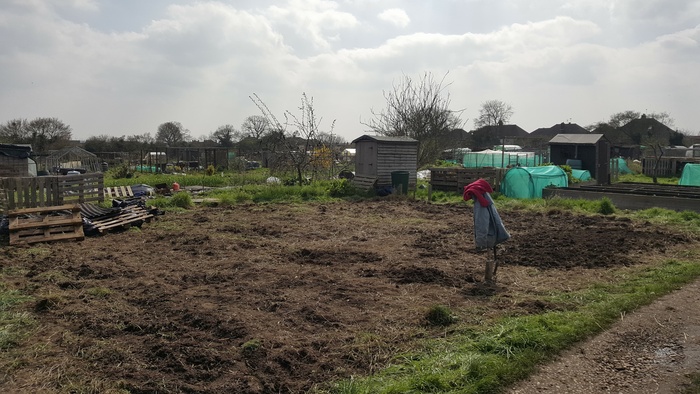
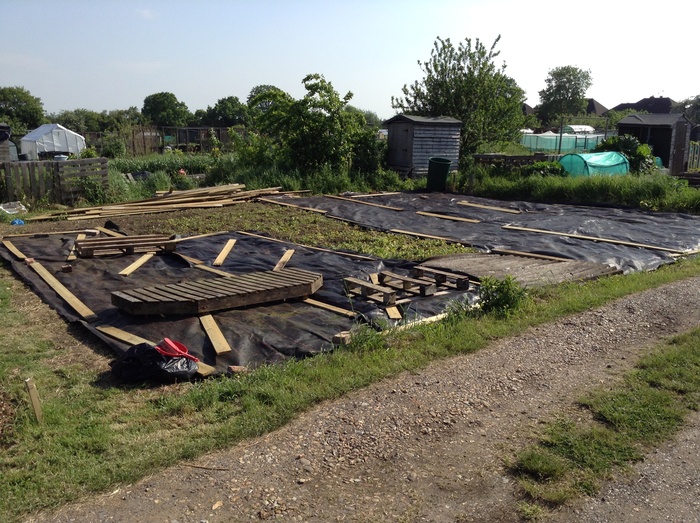
Then in May, we discovered the extent of bindweed covering the whole plot! We quickly treated the first wave with herbicide and then again in Midsummer. We got hold of lots of secondhand weed membrane and covered as much of the area as possible. This was a bit of a setback for us but the weed killer got the bindweed and creeping thistle under control.
Now a bit delayed but we carried on. Summer 2018 we grew a small collection of vegetables (donated and homegrown) in a less weedy corner of the plot to see how they grew. In hindsight, this was a good decision, as it was such a long hot dry Summer most of the weeds under the membrane gave up.
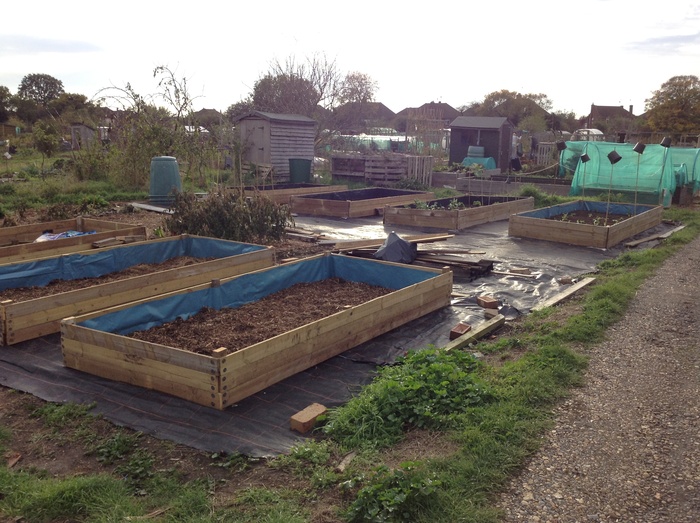
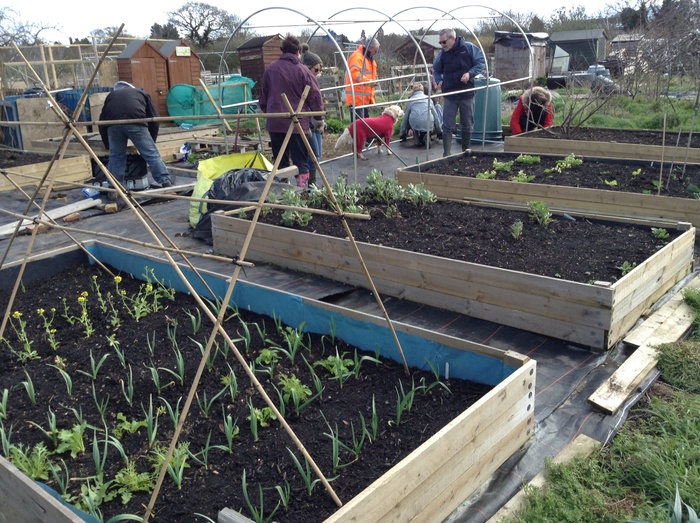
The seven raised beds were built over late Summer and Autumn of 2018. These raised beds were made from reclaimed timber, plastic sheeting, cardboard, old turf and a lot of help from various family members. Then, 10 tonnes of screened topsoil was delivered on a dull November afternoon. Luckily the driver was kind enough to fill two raised beds with his grab.
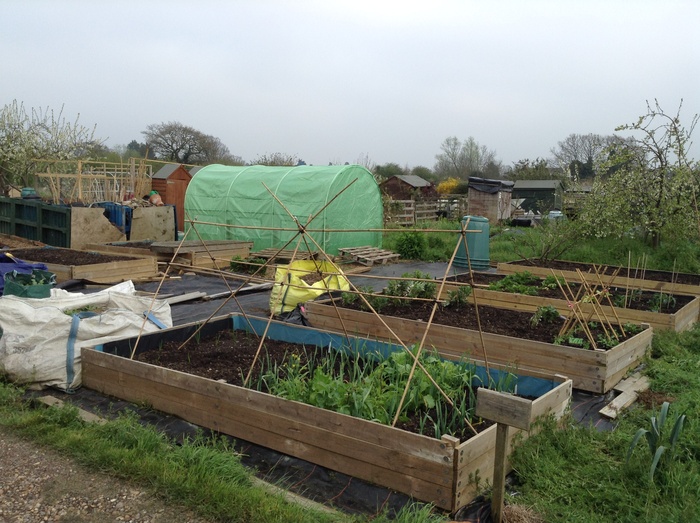
Again, Team Groupie swung into action the next day and moved our hill of top soil into remaining raised beds or various bulk bags (for storage). In the end, seven raised beds were either full or almost full. It took some time but we finally got to the exciting part … we got planting winter vegetables! So in went red cabbage, Italian black kale, broad beans, rainbow chard, winter salad mix, garlic and pot calendula.
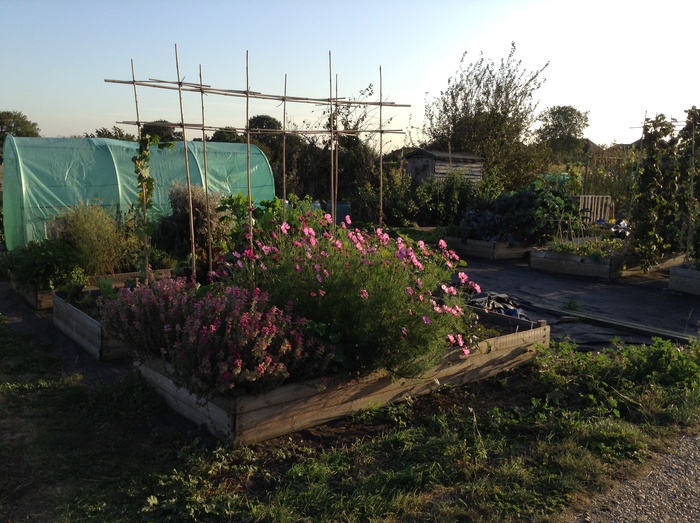
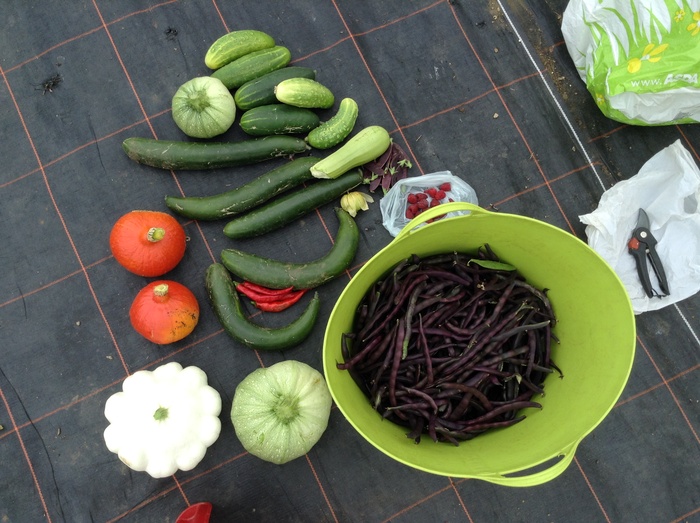
Keep checking into the website for Part two of the Marconi Belles journey, and once again a big thank you to Foggy and the team for sharing their story.
28th April 2020
In: Features
In 2018 the site welcomed a new group, the Marconi Belles who initially took over the plot opposite the trading hut. The plot was definitely in need of some attention, and Foggy Hau and the Belles have kindly agreed to provide their story. With the blessing of the Belles this item is spread over two different posts.......to keep everyone on tenterhooks for the next episode. A huge thank you to the group for sharing with us. All words and pictures courtesy of Foggy Hau and the Marconi Belles.
Plot 51B - Growing more than Fruit and Veg
Hello, we are members of the Marconi Belles Women Institute (WI). When you hear the word’s WI you might think - Jam and Jerusalem, Calendar Girls and baking cakes. In fact, we are charity that raises money and awareness on issues relating to women and their community. Just as importantly we socialise, learn new skills and have a cuppa. Marconi Belles are a relatively new WI in Chelmsford with wide portfolio of activity groups (we call them sub groups) which happen outside of our monthly meetings.

We are The Seedlings - the gardening sub group. We meet up throughout the year to visit gardens together, do volunteer work, have a drink and chat. Then we got talking about growing vegetables and fruit as a communal group … you can guess what happened!
A little group of us Seedlings decided to take on a allotment together in 2017. It was a mixture of practical necessity (as we all have small gardens) whilst sharing knowledge over a cuppa. It took a while for us to find a allotment site that would suit our needs. Then we visited the Melbourne Community site in Summer 2017 we were impressed. The excellent facilities and the welcoming atmosphere really won us over. So we applied for a half plot and waited.
It was a windy afternoon in February 2018 when we finally got to see plot 51B. The plot had the usual debris from neglect and tough woody weeds but we saw the potential. So we had a chat, agreed, signed the contract and our little allotment group started. The plan for 2018 was to clear the site and get planting.
On a sunny Saturday in April ‘The Groupies’ (The Seedlings Allotment mini group), family members and Missy the dog got to work clearing the site of years of rubbish and rotavated soil.


Then in May, we discovered the extent of bindweed covering the whole plot! We quickly treated the first wave with herbicide and then again in Midsummer. We got hold of lots of secondhand weed membrane and covered as much of the area as possible. This was a bit of a setback for us but the weed killer got the bindweed and creeping thistle under control.
Now a bit delayed but we carried on. Summer 2018 we grew a small collection of vegetables (donated and homegrown) in a less weedy corner of the plot to see how they grew. In hindsight, this was a good decision, as it was such a long hot dry Summer most of the weeds under the membrane gave up.


The seven raised beds were built over late Summer and Autumn of 2018. These raised beds were made from reclaimed timber, plastic sheeting, cardboard, old turf and a lot of help from various family members. Then, 10 tonnes of screened topsoil was delivered on a dull November afternoon. Luckily the driver was kind enough to fill two raised beds with his grab.

Again, Team Groupie swung into action the next day and moved our hill of top soil into remaining raised beds or various bulk bags (for storage). In the end, seven raised beds were either full or almost full. It took some time but we finally got to the exciting part … we got planting winter vegetables! So in went red cabbage, Italian black kale, broad beans, rainbow chard, winter salad mix, garlic and pot calendula.


Keep checking into the website for Part two of the Marconi Belles journey, and once again a big thank you to Foggy and the team for sharing their story.
Monkey Nuts and Radio 5 Live
22nd April 2020
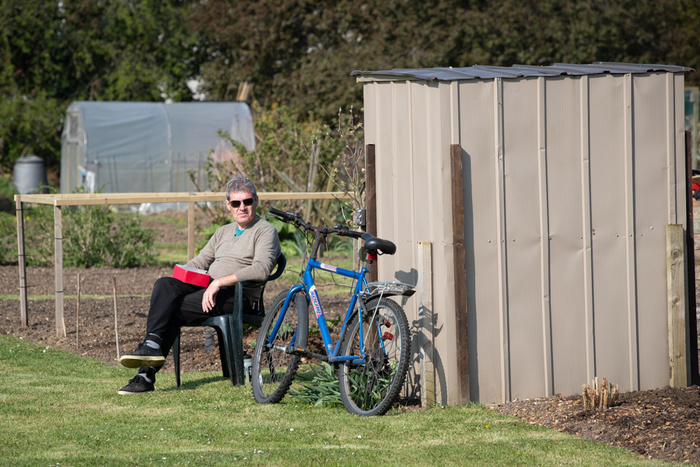
Hi Chris thanks for speaking to us. You have had a plot for a couple of years now. I am always amazed at how pristine your patch looks, with or without vegetables growing. Third place in last years Allotment competition too. What prompted you to take an allotment plot on? What was the initial motivation?
I guess it was my Dad, I was a little boy( back in the sixties ) he had a fully stocked garden with the whole garden kept in great order growing everything the Family needed and although sport got in the way for most of my life when I finally got to old to do sport any more I thought it was time to give it a go.
Have you previously had an allotment?
This is my first Plot , and to be honest when Valerie showed me and my Wife the plot we asked for a couple of days to think about it
How was the patch when you took it over and what was your initial priority?
Did you have a plan for what you wanted the allotment to look like?
It was a B***** mess, with well established weeds and long grass, but in the end we said yes, my first aim was to try and get it turned over and to see some Mud, and believe it or not it was the most satisfying thing ever. to slowly see the Plot coming back to life.
I have always kept the Plot as 2 big Patches and not turned it into smaller bite size Patches I like it this way, again a hark back to my Dad whose Garden was 2 long strips with a path running down the middle. ( standard Council House set up )
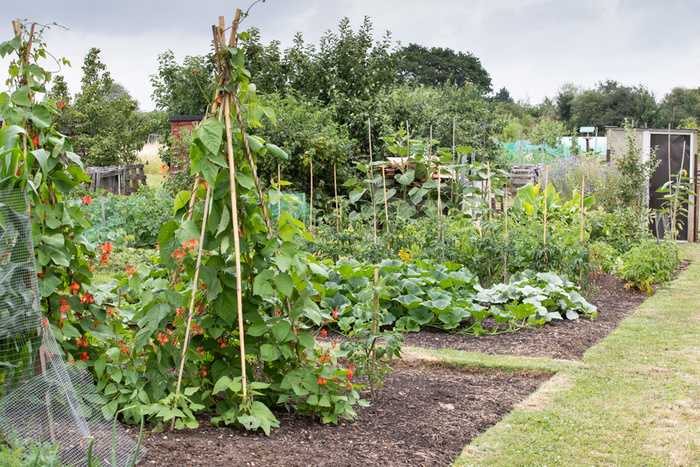
Having got it turned around I like to keep it totally Weed free, and not wishing to sound a grumpy old git I do like being down the far end sitting on my Chair with my Drink, Monkey nuts listening to Radio 5 live, overlooking my old School playing field. I think as you get older the more you reflect.
How did you decide what to grow - crop rotation?
Most of the things that I grow come from an agreement with my Wife ( she tells me what I`m growing ) that is a joke honest and she is my very own Market garden, starting most of the things in her Greenhouse, I work on a 3 year rotation so sort of divide the Plot into 3 parts and keep a booklet of what goes where when.
Any specific learning experiences over the time frame which you believe
to be invaluable?
What have I learned most about my Plot well it`s the position being down the far end puts me in direct contact with those Badger's - as soon as you turn over any soil and plant something they love to dig it up to have a snout, and I have to build something Akin to Colditz to keep them from getting the Sweetcorn ( usually a losing battle they are strong buggers )
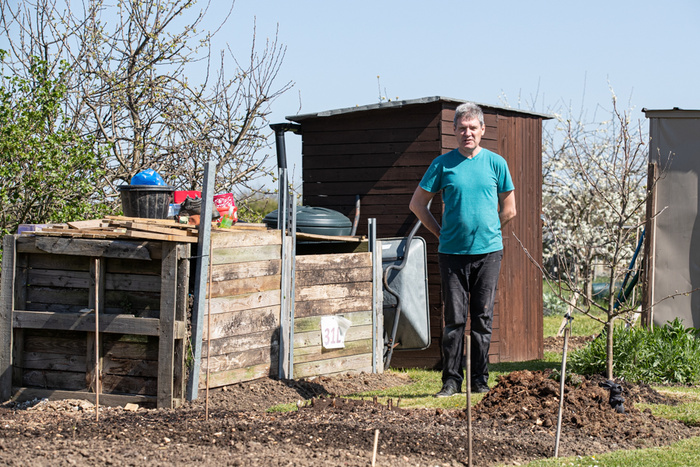
How have you found it on site.
The Allotment has everything, I do not know any other Site that has a Toilet and Shop and although I said I like being down the far end making me sound un-sociable it is still nice when who ever comes past they say hello and the get together at Xmas is a great event
I think it`s a great shame we can not fill every Plot, but lots of People must be put off when they are shown some of the Plots.
Having an Allotment seems to be like taking up Bowls (it`s only for old men ) if only people knew it's not.
Thanks for being a sport and offering up an insight to your plot. Hopefully you won't mind us catching up during the year to see how things are progressing.
22nd April 2020
In: Features

Hi Chris thanks for speaking to us. You have had a plot for a couple of years now. I am always amazed at how pristine your patch looks, with or without vegetables growing. Third place in last years Allotment competition too. What prompted you to take an allotment plot on? What was the initial motivation?
I guess it was my Dad, I was a little boy( back in the sixties ) he had a fully stocked garden with the whole garden kept in great order growing everything the Family needed and although sport got in the way for most of my life when I finally got to old to do sport any more I thought it was time to give it a go.
Have you previously had an allotment?
This is my first Plot , and to be honest when Valerie showed me and my Wife the plot we asked for a couple of days to think about it
How was the patch when you took it over and what was your initial priority?
Did you have a plan for what you wanted the allotment to look like?
It was a B***** mess, with well established weeds and long grass, but in the end we said yes, my first aim was to try and get it turned over and to see some Mud, and believe it or not it was the most satisfying thing ever. to slowly see the Plot coming back to life.
I have always kept the Plot as 2 big Patches and not turned it into smaller bite size Patches I like it this way, again a hark back to my Dad whose Garden was 2 long strips with a path running down the middle. ( standard Council House set up )

Having got it turned around I like to keep it totally Weed free, and not wishing to sound a grumpy old git I do like being down the far end sitting on my Chair with my Drink, Monkey nuts listening to Radio 5 live, overlooking my old School playing field. I think as you get older the more you reflect.
How did you decide what to grow - crop rotation?
Most of the things that I grow come from an agreement with my Wife ( she tells me what I`m growing ) that is a joke honest and she is my very own Market garden, starting most of the things in her Greenhouse, I work on a 3 year rotation so sort of divide the Plot into 3 parts and keep a booklet of what goes where when.
Any specific learning experiences over the time frame which you believe
to be invaluable?
What have I learned most about my Plot well it`s the position being down the far end puts me in direct contact with those Badger's - as soon as you turn over any soil and plant something they love to dig it up to have a snout, and I have to build something Akin to Colditz to keep them from getting the Sweetcorn ( usually a losing battle they are strong buggers )

How have you found it on site.
The Allotment has everything, I do not know any other Site that has a Toilet and Shop and although I said I like being down the far end making me sound un-sociable it is still nice when who ever comes past they say hello and the get together at Xmas is a great event
I think it`s a great shame we can not fill every Plot, but lots of People must be put off when they are shown some of the Plots.
Having an Allotment seems to be like taking up Bowls (it`s only for old men ) if only people knew it's not.
Thanks for being a sport and offering up an insight to your plot. Hopefully you won't mind us catching up during the year to see how things are progressing.
Kevin's Number 1 Allotment Plot
16th April 2020
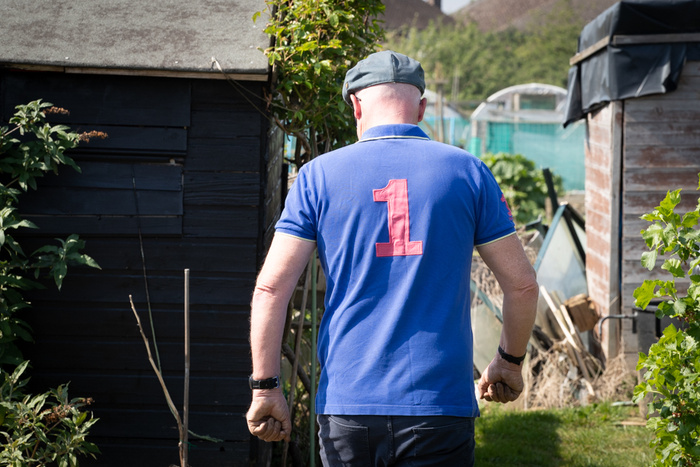
Hi Kevin,
You were kind enough to help with a couple of articles last year for the web site, and as you know we are trying to encourage as many as possible to chip in and share their thoughts. Thank you once again for answering all the questions again. Last time we caught up you indicated you had learnt quite a bit from last year,
Yes. Don’t be over eager to plant. Wait to sow seeds ...everything catches up. When you fancy sowing wait a further 2 weeks! I had my best year ever last year when due to a holiday I had to wait until May before I planted anything. This included putting up a poly tunnel to grow tomatoes peppers and lettuce.
To be more spacious. I’ve now got 3 allotments but will leave plenty of space to hoe between plants. I will have more ground, grow the same amount but it will take me less time to weed. Last job before leaving the site will be to hoe everywhere!
Add plenty of manure and use it as a mulch ..depresses the weeds, saves time, and enriches the soil.
What about other plot holders. There is a host of experience on site what have you gained from them.
Talk to other allotment holders. There is always something to learn. I’ve learned how to grow carrots in raised beds to avoid white fly , how to prevent Badgers eating your sweet corn, how to prune apple trees, and what to cover up to prevent damage from birds.
Any other useful snippets to pass on
It’s worth investing in the future. Time and money .Covering an old poly tunnel with chicken wire to keep the birds away and purchasing blueberry plants was so worth it. They will be there for a number of years. Planting asparagus in a raised bed required patience. This year after a 3 year wait the crop should be really good and will be for a number of years
You indicated you were going to spread the planting this season
I learnt not to plant everything in the same place. Spread the risk. I now plant half a crop in one area and half in another area. What works one year may not work the next year. I also make sure that I rotate crops generally. I have considered adopting the medieval 3 field system as I have 3 allotments. Perhaps a step too far!! I don’t think I could leave one allotment fallow!
Any other time saving or useful tips you would like to share?
Plants crops that need a lot of watering near the taps. Save time. Despite the wind and rain of January and February I’m sure that we will have a drought again in August!
Label all your crops. I tried several types of potatoes. You need to remember what you like so you can plant it next year!
I have found little and often is the key. At least visit once a week or a few times for short periods. It’s so easy to let things drift and then the catch up can be soul destroying. Staying on top of things means it can be enjoyed and be relaxing. It should be a hobby !!
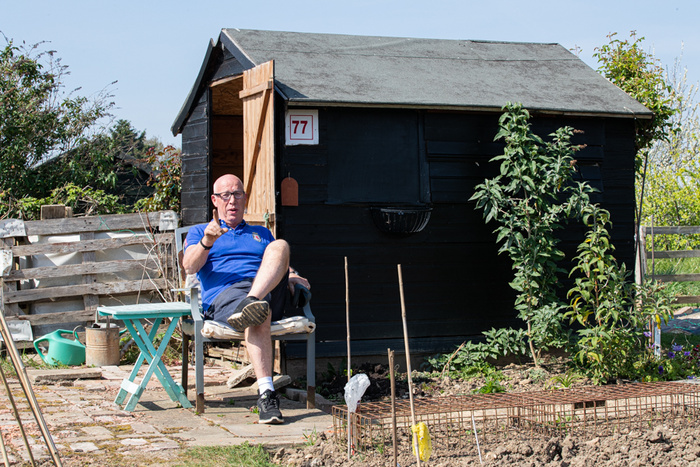
What ultimately is your plan for this year?
I intend to make sure that we are self sufficient all year round . Achieved this for about 9 months of the year so far . At the moment I have Curly Kale , rhubarb , Brussels and am still enjoying tomato soup made last year. Just run out of potatoes but have just planted pentland javelin potatoes ( my favourite). Broad beans in flower, second sowing in, and elephant garlic up. Strawberries and onion sets planted.
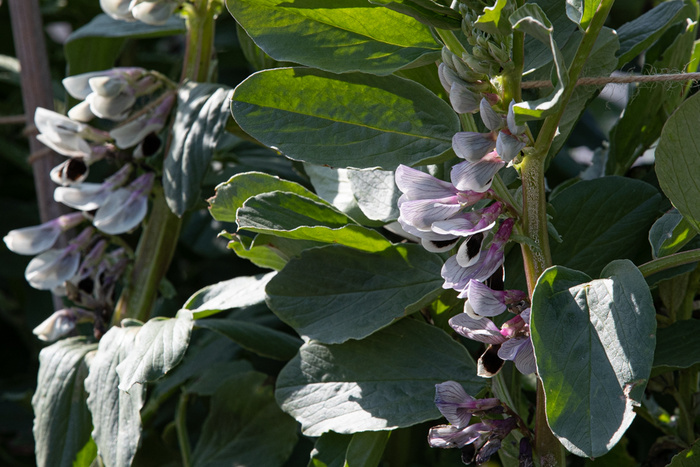
Plan ahead. I’ve bought all my seeds for the year as I did last year. Probably even more important this year. If I need to be in isolation I have somewhere to go. I can visit my allotment hopefully rather than the supermarket!
Plant flowers and roses . Have a seat and create a something enjoyable to look at! Taking time out to sit and enjoy a good cup of tea or even a beer is so good for your well being!
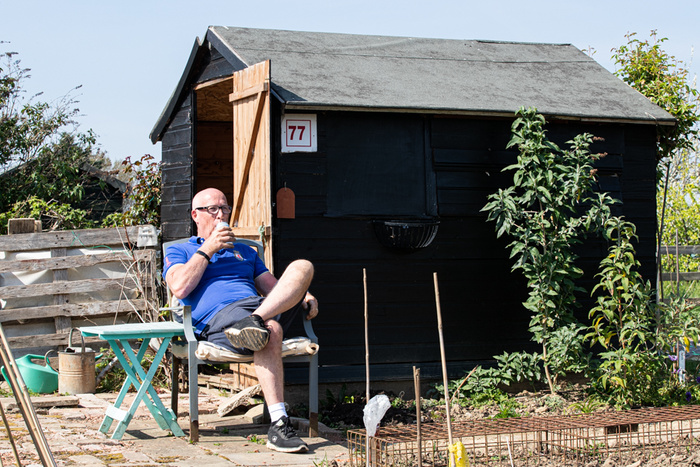
Is there anything else you would like to add?
Those badgers are a nuisance !! I’ve now got raised beds with fencing , fruit frames and fenced of areas and have learned how to protect everything. However I will not be laying any more wood chip paths as they love them ..looking for bugs . My first job when arriving at the allotment is to rake paths back.They love sweet corn. Protect it! Fence it off or at least hide it or spread it about! I tried planting it in several places. An experiment - I hid some between blackberry bushes which was successful!
Once again a big thanks to Kevin for sharing his thoughts for the Association web site. We’ll look to catch up again during the season along with his fellow Allotmenteers Alex and Ian to see how the year has progressed.
16th April 2020
In: Features

Hi Kevin,
You were kind enough to help with a couple of articles last year for the web site, and as you know we are trying to encourage as many as possible to chip in and share their thoughts. Thank you once again for answering all the questions again. Last time we caught up you indicated you had learnt quite a bit from last year,
Yes. Don’t be over eager to plant. Wait to sow seeds ...everything catches up. When you fancy sowing wait a further 2 weeks! I had my best year ever last year when due to a holiday I had to wait until May before I planted anything. This included putting up a poly tunnel to grow tomatoes peppers and lettuce.
To be more spacious. I’ve now got 3 allotments but will leave plenty of space to hoe between plants. I will have more ground, grow the same amount but it will take me less time to weed. Last job before leaving the site will be to hoe everywhere!
Add plenty of manure and use it as a mulch ..depresses the weeds, saves time, and enriches the soil.
What about other plot holders. There is a host of experience on site what have you gained from them.
Talk to other allotment holders. There is always something to learn. I’ve learned how to grow carrots in raised beds to avoid white fly , how to prevent Badgers eating your sweet corn, how to prune apple trees, and what to cover up to prevent damage from birds.
Any other useful snippets to pass on
It’s worth investing in the future. Time and money .Covering an old poly tunnel with chicken wire to keep the birds away and purchasing blueberry plants was so worth it. They will be there for a number of years. Planting asparagus in a raised bed required patience. This year after a 3 year wait the crop should be really good and will be for a number of years
You indicated you were going to spread the planting this season
I learnt not to plant everything in the same place. Spread the risk. I now plant half a crop in one area and half in another area. What works one year may not work the next year. I also make sure that I rotate crops generally. I have considered adopting the medieval 3 field system as I have 3 allotments. Perhaps a step too far!! I don’t think I could leave one allotment fallow!
Any other time saving or useful tips you would like to share?
Plants crops that need a lot of watering near the taps. Save time. Despite the wind and rain of January and February I’m sure that we will have a drought again in August!
Label all your crops. I tried several types of potatoes. You need to remember what you like so you can plant it next year!
I have found little and often is the key. At least visit once a week or a few times for short periods. It’s so easy to let things drift and then the catch up can be soul destroying. Staying on top of things means it can be enjoyed and be relaxing. It should be a hobby !!

What ultimately is your plan for this year?
I intend to make sure that we are self sufficient all year round . Achieved this for about 9 months of the year so far . At the moment I have Curly Kale , rhubarb , Brussels and am still enjoying tomato soup made last year. Just run out of potatoes but have just planted pentland javelin potatoes ( my favourite). Broad beans in flower, second sowing in, and elephant garlic up. Strawberries and onion sets planted.

Plan ahead. I’ve bought all my seeds for the year as I did last year. Probably even more important this year. If I need to be in isolation I have somewhere to go. I can visit my allotment hopefully rather than the supermarket!
Plant flowers and roses . Have a seat and create a something enjoyable to look at! Taking time out to sit and enjoy a good cup of tea or even a beer is so good for your well being!

Is there anything else you would like to add?
Those badgers are a nuisance !! I’ve now got raised beds with fencing , fruit frames and fenced of areas and have learned how to protect everything. However I will not be laying any more wood chip paths as they love them ..looking for bugs . My first job when arriving at the allotment is to rake paths back.They love sweet corn. Protect it! Fence it off or at least hide it or spread it about! I tried planting it in several places. An experiment - I hid some between blackberry bushes which was successful!
Once again a big thanks to Kevin for sharing his thoughts for the Association web site. We’ll look to catch up again during the season along with his fellow Allotmenteers Alex and Ian to see how the year has progressed.
Water Leaks on site
15th April 2020
There was quite a severe water leak at the base of the plot yesterday, and the council contractors have been on site, but need spare parts to repair and in the short term have had to turn the water off. Please note the following message from Chelmsford City Council in relation to this matter.
Please DO NOT tamper with ANY of the standpipes on the allotment site as the Council are aware of various water leak issues at the moment and in the process of resolving this issue. If a standpipe near to your plot isnt working please in the meantime use water from one that is working.
There are standpipes working at the far side of the plot (up from the Wilderness Foundation and we hope to have some positive news in relation to a fix shortly,
15th April 2020
In: General News
There was quite a severe water leak at the base of the plot yesterday, and the council contractors have been on site, but need spare parts to repair and in the short term have had to turn the water off. Please note the following message from Chelmsford City Council in relation to this matter.
Please DO NOT tamper with ANY of the standpipes on the allotment site as the Council are aware of various water leak issues at the moment and in the process of resolving this issue. If a standpipe near to your plot isnt working please in the meantime use water from one that is working.
There are standpipes working at the far side of the plot (up from the Wilderness Foundation and we hope to have some positive news in relation to a fix shortly,
COVID 19 - Cabin Closure
11th April 2020
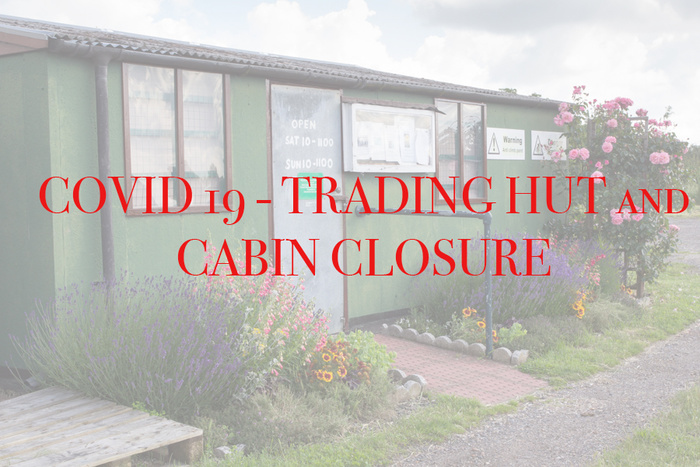
Having considered all the available information and continuing to follow government and Membership body advice we have taken the regrettable decision to close the cabin facilities until further notice. This decision has not been easy, and has been taken in consideration of the well being and interests of all members on site.
The advice from the National Allotment Association is all community facilities should be closed and whilst everyone on site has been socially distancing, we feel the potential risk involved with our communal facilities is not one we are able to ignore, and ultimately we need to ensure we have protected the health and safety, of everyone on site.
We hope the general membership of the Association and plot holders will consider this decision appropriate and sensible in light of all the government advice especially in terms of our collective responsibilities to each other. At the point in time where restrictive measures and social distancing are relaxed we will be in a position to re - open.
11th April 2020
In: General News

Having considered all the available information and continuing to follow government and Membership body advice we have taken the regrettable decision to close the cabin facilities until further notice. This decision has not been easy, and has been taken in consideration of the well being and interests of all members on site.
The advice from the National Allotment Association is all community facilities should be closed and whilst everyone on site has been socially distancing, we feel the potential risk involved with our communal facilities is not one we are able to ignore, and ultimately we need to ensure we have protected the health and safety, of everyone on site.
We hope the general membership of the Association and plot holders will consider this decision appropriate and sensible in light of all the government advice especially in terms of our collective responsibilities to each other. At the point in time where restrictive measures and social distancing are relaxed we will be in a position to re - open.
Peter Caffrey - My Allotment Story 1982-2020
10th April 2020
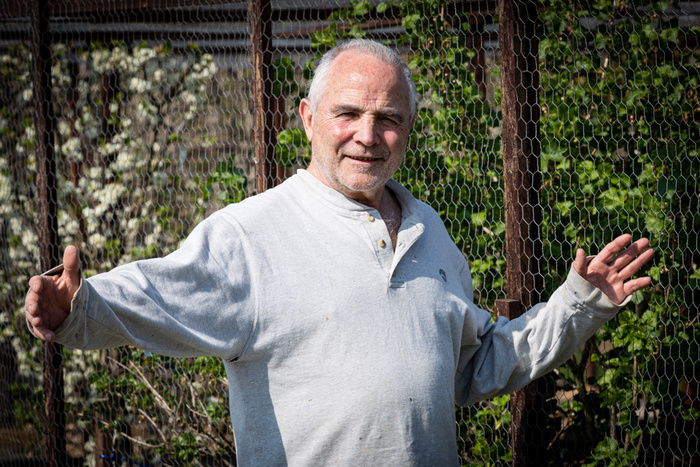
The web site has published various features over the last couple of years in relation to new plot holders, their motivations and how they have tackled their plots, together with one or two more experienced plot holders who have shared their views. However, there
is one member of the Association who we believe has now held a plot on site for almost 40 years and would therefore constitute the most experienced member amongst us. His plot was adjudged best in class in the Melbourne Park Annual allotment competition in 2018. We caught up with Peter Caffrey and he kindly agreed to pen an article for us in terms of his time on the site. Rather than break the piece up with questions, we have re produced Peter’s thoughts exactly as he expressed’.
I developed my passion for gardening in my family's walled garden in Mid Wales. I moved to Chelmsford for work in 1969 aged 21 and soon took to managing a small plot in the gardens of the 'Cherry Tree' pub - now built over.
In the early 1980's I took over a plot previously managed by my friend Geoff Bailey on the corner opposite the wildlife garden (I believe plot 67),
Over the last 40 years I have learned a great deal from many excellent gardeners on the site and tried also to give advice myself when asked. I was fortunate enough to have a excellent and inspiring allotment holder as a neighbour (Ted) who was a very well organised, neat and productive gardener. My current success for example with peas is largely due to his mantra of sowing his seeds heavily giving 'one for the birds, one for the mice and one for me!' Sadly Ted had to give his plot up due to failing eyesight.
When I moved my father from Wales to live close to me we took on a new plot so that he could continue his love of gardening. Sadly he died on the plot in the way that he lived, with his tools in his pocket and wanting to work. I wanted to continue on this plot in my father's memory. This was not to be as plans had been agreed to sell off this section of the site for the new housing development and the place where my father died now has a building over it.
I was instructed to choose another plot on the remaining site. Suzanne Higgins was in charge of overseeing the move and I was able to select new plants to replace ones I had lost through the move. I was also supplied with a new shed. As a gesture of good will and in appreciation of my co - operation Suzanne also supplied me with two Kent Cob Nut trees which continue to flourish and crop. Cuttings I have taken from these two trees are also growing on other areas of the site, and in friends gardens and the woods.
Over the site's recent history, there have been considerable improvements, not least the facilities. However, the most significant influence in relation to the improvement of the site came with the arrival of the Holbrook / Lawrence family. They brought a new enthusiasm and commitment to the area, giving a much better sense of community, with a functioning committee, social events and a better run trading hut. I would like to take the opportunity to express my thanks to them for the improvements they brought about and continue to do so. Prior to their arrival the site lacked leadership and direction from its members. The extent of this leadership was most apparent in the tenacious pursuit of the promised improvements committed as a consequence of the land sale and new housing development. This was enormously helped with Tony’s relationship developed over time with the builders, and a refusal to accept anything less than expected, which contributed to the beneficial facilities we take for granted today.
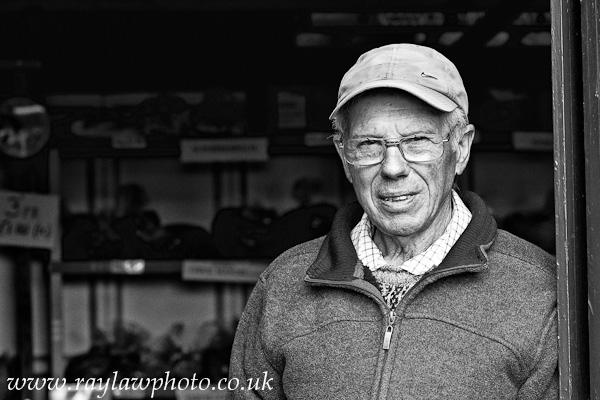
In looking for a new plot I was well advised by Doug, who unfortunately is no longer with us, who assured me the plot I was considering (73) had been well looked after until a few years before and had been well manured! He was obviously keen to have the plot, which at that time was next to his, occupied. Doug had been very kind to my father so I was happy to trust his advice and the plot has indeed been very productive ever since. Doug's best tip out of many was to plant 2 broad bean seeds at each station so that if one failed or was eaten by mice the other might survive to ensure a crop. I have followed the advice ever since.
I later encouraged good friends Tom and son John Smith to take over plot 74 next to me. When John moved away I took over his plot. In partnership with good friends Richard and Jackie Harris we built a chicken run and house and enjoyed fresh eggs for several years.
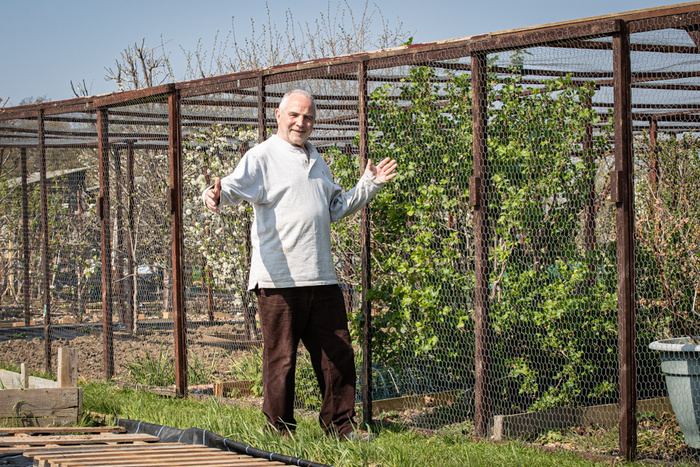
Over the last few years another good friend, Dave, has taken an interest in the plot and has been a great help especially with the DOY, grass cutting, covering the times when I am away. In the last few years together we built a large cage to protect the sweet corn from the badgers, peas and brassica from the pigeons, and fruit from the birds, whilst also being big enough to enable crop rotation. It was an expensive project but now we are reaping the benefits of it's protections although the structure was too big for the authorities liking! I was delighted when my plot was judged the best on site in 2018. This is also down to the help given by Dave.
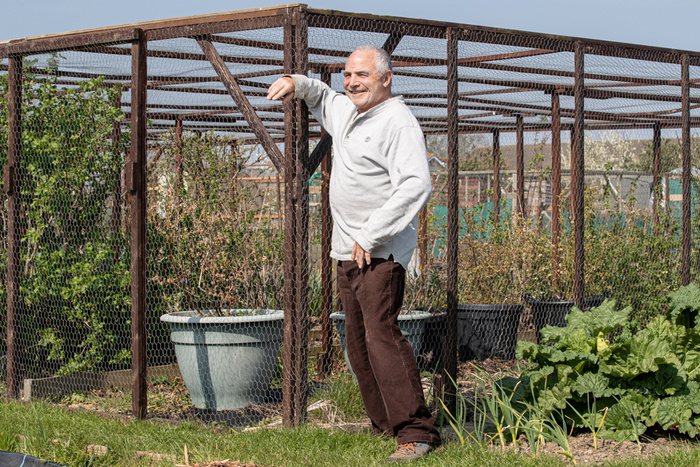
My greatest frustration with the site is the number of empty, derelict plots which makes the area very unsightly. As these are left to tall into an overgrown state it is too great a challenge for any aspiring new plot holder to be successful and all too often give up the plot. I have always thought it would be better to maintain 2 half plots by killing the vegetation and turning the plot roughly so the plot looks appealing enough to encourage someone to take it over and not so difficult to bring to a good condition, and in turn they keep the plot on. Once these plots are taken 2 new half plots should be cleared for the next intake. In the long term this would increase membership, make the site more cost effective and orderly.
The site has given so many people so much pleasure and health benefits over the years it is a worthy cause for more investment.
With grateful thanks to Peter Caffrey for providing us with this story of his time on the allotments.
10th April 2020
In: Features

The web site has published various features over the last couple of years in relation to new plot holders, their motivations and how they have tackled their plots, together with one or two more experienced plot holders who have shared their views. However, there
is one member of the Association who we believe has now held a plot on site for almost 40 years and would therefore constitute the most experienced member amongst us. His plot was adjudged best in class in the Melbourne Park Annual allotment competition in 2018. We caught up with Peter Caffrey and he kindly agreed to pen an article for us in terms of his time on the site. Rather than break the piece up with questions, we have re produced Peter’s thoughts exactly as he expressed’.
I developed my passion for gardening in my family's walled garden in Mid Wales. I moved to Chelmsford for work in 1969 aged 21 and soon took to managing a small plot in the gardens of the 'Cherry Tree' pub - now built over.
In the early 1980's I took over a plot previously managed by my friend Geoff Bailey on the corner opposite the wildlife garden (I believe plot 67),
Over the last 40 years I have learned a great deal from many excellent gardeners on the site and tried also to give advice myself when asked. I was fortunate enough to have a excellent and inspiring allotment holder as a neighbour (Ted) who was a very well organised, neat and productive gardener. My current success for example with peas is largely due to his mantra of sowing his seeds heavily giving 'one for the birds, one for the mice and one for me!' Sadly Ted had to give his plot up due to failing eyesight.
When I moved my father from Wales to live close to me we took on a new plot so that he could continue his love of gardening. Sadly he died on the plot in the way that he lived, with his tools in his pocket and wanting to work. I wanted to continue on this plot in my father's memory. This was not to be as plans had been agreed to sell off this section of the site for the new housing development and the place where my father died now has a building over it.
I was instructed to choose another plot on the remaining site. Suzanne Higgins was in charge of overseeing the move and I was able to select new plants to replace ones I had lost through the move. I was also supplied with a new shed. As a gesture of good will and in appreciation of my co - operation Suzanne also supplied me with two Kent Cob Nut trees which continue to flourish and crop. Cuttings I have taken from these two trees are also growing on other areas of the site, and in friends gardens and the woods.
Over the site's recent history, there have been considerable improvements, not least the facilities. However, the most significant influence in relation to the improvement of the site came with the arrival of the Holbrook / Lawrence family. They brought a new enthusiasm and commitment to the area, giving a much better sense of community, with a functioning committee, social events and a better run trading hut. I would like to take the opportunity to express my thanks to them for the improvements they brought about and continue to do so. Prior to their arrival the site lacked leadership and direction from its members. The extent of this leadership was most apparent in the tenacious pursuit of the promised improvements committed as a consequence of the land sale and new housing development. This was enormously helped with Tony’s relationship developed over time with the builders, and a refusal to accept anything less than expected, which contributed to the beneficial facilities we take for granted today.

In looking for a new plot I was well advised by Doug, who unfortunately is no longer with us, who assured me the plot I was considering (73) had been well looked after until a few years before and had been well manured! He was obviously keen to have the plot, which at that time was next to his, occupied. Doug had been very kind to my father so I was happy to trust his advice and the plot has indeed been very productive ever since. Doug's best tip out of many was to plant 2 broad bean seeds at each station so that if one failed or was eaten by mice the other might survive to ensure a crop. I have followed the advice ever since.
I later encouraged good friends Tom and son John Smith to take over plot 74 next to me. When John moved away I took over his plot. In partnership with good friends Richard and Jackie Harris we built a chicken run and house and enjoyed fresh eggs for several years.

Over the last few years another good friend, Dave, has taken an interest in the plot and has been a great help especially with the DOY, grass cutting, covering the times when I am away. In the last few years together we built a large cage to protect the sweet corn from the badgers, peas and brassica from the pigeons, and fruit from the birds, whilst also being big enough to enable crop rotation. It was an expensive project but now we are reaping the benefits of it's protections although the structure was too big for the authorities liking! I was delighted when my plot was judged the best on site in 2018. This is also down to the help given by Dave.

My greatest frustration with the site is the number of empty, derelict plots which makes the area very unsightly. As these are left to tall into an overgrown state it is too great a challenge for any aspiring new plot holder to be successful and all too often give up the plot. I have always thought it would be better to maintain 2 half plots by killing the vegetation and turning the plot roughly so the plot looks appealing enough to encourage someone to take it over and not so difficult to bring to a good condition, and in turn they keep the plot on. Once these plots are taken 2 new half plots should be cleared for the next intake. In the long term this would increase membership, make the site more cost effective and orderly.
The site has given so many people so much pleasure and health benefits over the years it is a worthy cause for more investment.
With grateful thanks to Peter Caffrey for providing us with this story of his time on the allotments.
April To Do
03rd April 2020
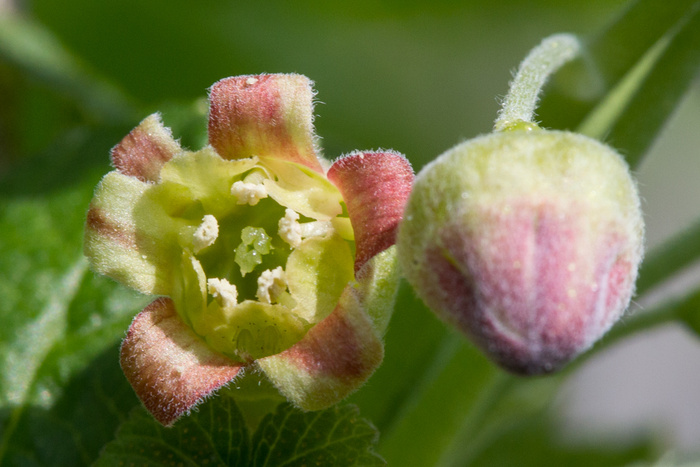
With the buds on various plants and trees now bursting through, there are a host of things to do in the month of APRIL. The web site hosts a page entitled the ALLOTMENT YEAR, which was originally posted as a series of jottings in terms of how Karen tackled the allotment and the job to be undertaken at various stages of the year.
For any avid readers of Karen's posts, there are some notable differences this year. Firstly we have encountered an extremely wet, but not particularly harsh winter. The social distancing measures in terms of COVID 19 means all sport whether elite or club level has been cancelled, and therefore Ray is not off at a cricket fixture, race track or end of season football, and can therefore be spied from time to time actually doing something on the plot.
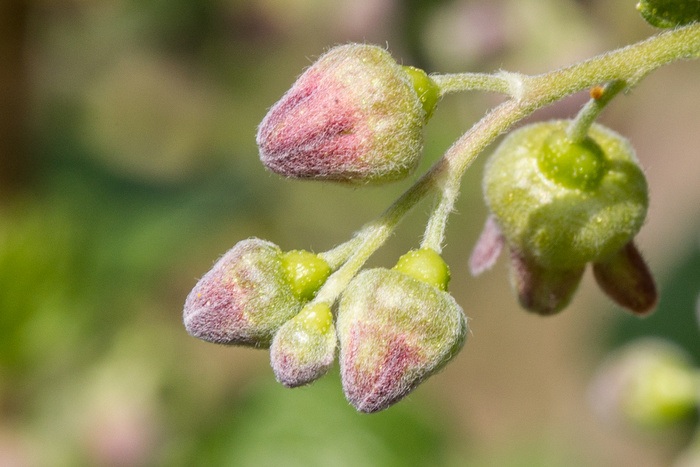
These points aside, the conservatory is gradually filling up with tomato, spring onion, beetroot, peas and mange tout plants, with the window sills littered with Inca Berry, beauty bell peppers, chillis, dahlia, coriander, marjoram and lettuce. Courgettes and squashes are due to be sown during April, and there are a host of activities to be done on site in terms of existing fruit bushes / trees, with the final remnants of tidying up for the growing season.
The original article is a little dated now, but presents a useful reference point for the month of April.
03rd April 2020
In: Features

With the buds on various plants and trees now bursting through, there are a host of things to do in the month of APRIL. The web site hosts a page entitled the ALLOTMENT YEAR, which was originally posted as a series of jottings in terms of how Karen tackled the allotment and the job to be undertaken at various stages of the year.
For any avid readers of Karen's posts, there are some notable differences this year. Firstly we have encountered an extremely wet, but not particularly harsh winter. The social distancing measures in terms of COVID 19 means all sport whether elite or club level has been cancelled, and therefore Ray is not off at a cricket fixture, race track or end of season football, and can therefore be spied from time to time actually doing something on the plot.

These points aside, the conservatory is gradually filling up with tomato, spring onion, beetroot, peas and mange tout plants, with the window sills littered with Inca Berry, beauty bell peppers, chillis, dahlia, coriander, marjoram and lettuce. Courgettes and squashes are due to be sown during April, and there are a host of activities to be done on site in terms of existing fruit bushes / trees, with the final remnants of tidying up for the growing season.
The original article is a little dated now, but presents a useful reference point for the month of April.
COVID 19 - Trading Hut Closure
29th March 2020
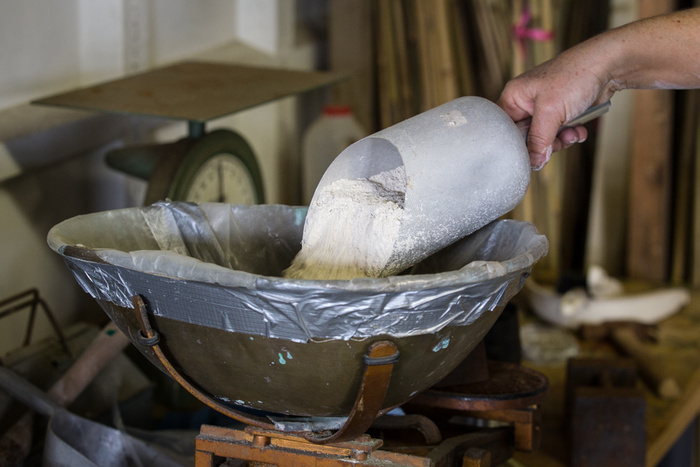
Following the latest government guidelines and requirements for social distancing, and the closure of the majority of non essential trading outlets, we regrettably view there is little option than to close the trading hut until further notice. There is a note on the door of the hut to this effect.
This step is consistent with information and guidelines published by other societies and associations, including the National Allotment Association.
We are however considering how we may provide product to the Allotment community using a type of 'click and collect', or basic e mail order exchange. For those not using mail services, possibly over the telephone. The issue remains still one of handling product or cash and if we believe we can organise something which absolutely minimises risk, will update and advise via the website and Association notice board on Site.
The web site does have a contact page, and this provides the possibility to contact via this method if we chose this route.
Meanwhile, we urge all of us to continue to adopt the government advice, taking the appropriate approach, and hope everyone remains safe and well.
29th March 2020
In: General News

Following the latest government guidelines and requirements for social distancing, and the closure of the majority of non essential trading outlets, we regrettably view there is little option than to close the trading hut until further notice. There is a note on the door of the hut to this effect.
This step is consistent with information and guidelines published by other societies and associations, including the National Allotment Association.
We are however considering how we may provide product to the Allotment community using a type of 'click and collect', or basic e mail order exchange. For those not using mail services, possibly over the telephone. The issue remains still one of handling product or cash and if we believe we can organise something which absolutely minimises risk, will update and advise via the website and Association notice board on Site.
The web site does have a contact page, and this provides the possibility to contact via this method if we chose this route.
Meanwhile, we urge all of us to continue to adopt the government advice, taking the appropriate approach, and hope everyone remains safe and well.
In conversation with Richard Harris
26th March 2020

Richard is a long standing plot holder at Melbourne Park, first taking on a plot in the early 90’s. With an easy going disposition, often sporting his beloved ‘Gooners’ hat, although indicates he is not a ‘gooner’. In fact he suggests failing to know this was the Arsenal supporters nickname, and wears it primarily to keep his ears warm. We caught up with Richard for a chat and would like to assure everyone in producing this piece we we kept appropriate social distancing and the photograph taken with a suitable telephoto lens!
Hi Richard. What prompted you to get an allotment?
Various reasons really. I had an allotment elsewhere originally, at the Avenues, and then through work I moved to the South of England and gave the original plots up. When we moved back, i decided to take on a couple of plots here at Melbourne Park.
What was the site like at that time?
The site was very different from today. The pathways were in a reasonably poor state of repair, and a much cleaner overall view across the site. Whilst there were a few sheds dotted about, there was none of the construction, cages, extent of raised beds which we see on the site today. a lot of this is quite recent, maybe over the last 8-10 years where all the cages have been built.
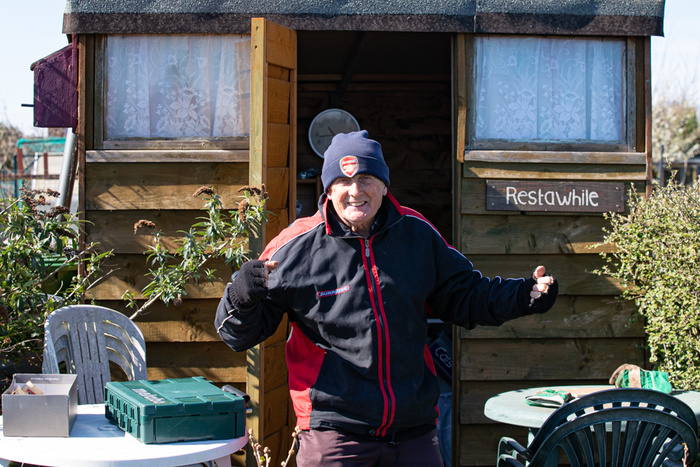
When i first took the plot on, it had been turned over, probably from a previous owner. If I recall a previous tenant had left no more than six months previously.
Whilst the site had a trading hut, I very rarely used it, and can’t really recall the extent of what was sold. I do recall there were some fizzy drinks sold, ‘corona’ and you can still see one or two of the empty crates about, but a couple of years after I joined the site the trading hut closed, maybe 96 or 97.
What do you tend to grow and have your growing habits changed at all.
The pattern of growth has changed a little bit over the years, but not a lot.I got quite discouraged at one point in terms of onions, which through disease failed, and haven’t grown them since, and other than this grow the basic staples, runner beans (you can never have enough beans), potatoes, carrots, leeks, beetroot and giant peas - plants which can reach 8ft in height.
I built vegetable troughs principally to protect from the effects of carrot fly, and then in some of the other grow lettuce, and spring onions.
What are you up to at the moment - have seen you re purposing some railway sleepers.
I am constructing a base for a greenhouse (no glass), and as you say re purposing railway sleepers as a base, building a frame and then have some of the wavy polycarbonate stuff to surround. I am hoping this is suitable. the plan is to grow tomatoes, cucumbers and smaller fruit and vegetable which may prosper in warmer and protected conditions, or anything else which takes my fancy - I could erect a hammock….
Any advice you would offer up to newer members of the site.
Yes, keep at it. It takes a while to get things going. Have a picture in your mind in terms of what you want to achieve and plan ahead. Don’t get down if the immediate results don’t seem apparent and persevere. Have a goal or vision.
Anything else you would like to add?
Having a plot is great for your health. provides a ready source of fresh air, exercise, is good for your body, and you get to grow your own food and know exactly what you are putting on your plate. In times gone by there was also Bert’s singing voice - he used to sing to himself on his plot, hugely cheerful, and blissfully unaware of others, and is a great reminder of some of the past days on site.
A big thank you to Richard for sparing his thoughts.
26th March 2020
In: Features

Richard is a long standing plot holder at Melbourne Park, first taking on a plot in the early 90’s. With an easy going disposition, often sporting his beloved ‘Gooners’ hat, although indicates he is not a ‘gooner’. In fact he suggests failing to know this was the Arsenal supporters nickname, and wears it primarily to keep his ears warm. We caught up with Richard for a chat and would like to assure everyone in producing this piece we we kept appropriate social distancing and the photograph taken with a suitable telephoto lens!
Hi Richard. What prompted you to get an allotment?
Various reasons really. I had an allotment elsewhere originally, at the Avenues, and then through work I moved to the South of England and gave the original plots up. When we moved back, i decided to take on a couple of plots here at Melbourne Park.
What was the site like at that time?
The site was very different from today. The pathways were in a reasonably poor state of repair, and a much cleaner overall view across the site. Whilst there were a few sheds dotted about, there was none of the construction, cages, extent of raised beds which we see on the site today. a lot of this is quite recent, maybe over the last 8-10 years where all the cages have been built.

When i first took the plot on, it had been turned over, probably from a previous owner. If I recall a previous tenant had left no more than six months previously.
Whilst the site had a trading hut, I very rarely used it, and can’t really recall the extent of what was sold. I do recall there were some fizzy drinks sold, ‘corona’ and you can still see one or two of the empty crates about, but a couple of years after I joined the site the trading hut closed, maybe 96 or 97.
What do you tend to grow and have your growing habits changed at all.
The pattern of growth has changed a little bit over the years, but not a lot.I got quite discouraged at one point in terms of onions, which through disease failed, and haven’t grown them since, and other than this grow the basic staples, runner beans (you can never have enough beans), potatoes, carrots, leeks, beetroot and giant peas - plants which can reach 8ft in height.
I built vegetable troughs principally to protect from the effects of carrot fly, and then in some of the other grow lettuce, and spring onions.
What are you up to at the moment - have seen you re purposing some railway sleepers.
I am constructing a base for a greenhouse (no glass), and as you say re purposing railway sleepers as a base, building a frame and then have some of the wavy polycarbonate stuff to surround. I am hoping this is suitable. the plan is to grow tomatoes, cucumbers and smaller fruit and vegetable which may prosper in warmer and protected conditions, or anything else which takes my fancy - I could erect a hammock….
Any advice you would offer up to newer members of the site.
Yes, keep at it. It takes a while to get things going. Have a picture in your mind in terms of what you want to achieve and plan ahead. Don’t get down if the immediate results don’t seem apparent and persevere. Have a goal or vision.
Anything else you would like to add?
Having a plot is great for your health. provides a ready source of fresh air, exercise, is good for your body, and you get to grow your own food and know exactly what you are putting on your plate. In times gone by there was also Bert’s singing voice - he used to sing to himself on his plot, hugely cheerful, and blissfully unaware of others, and is a great reminder of some of the past days on site.
A big thank you to Richard for sparing his thoughts.
COVID 19
20th March 2020
In view of the escalating issues of COVID 19, National Health England and the government advice in terms of social distancing, we will need to ensure everyone at the Allotments take appropriate steps to protect themselves.
At this point in time we have not decided to close the trading hut, but would request common sense prevails in terms of distance and social interaction should you be on site or decide to visit the trading hut. Of course if you have any of the symptoms the advice is to self isolate at home and we would anticipate everyone abides by these requirements as appropriate.
If the situation escalates, or government (National Health England) advice change, we will need to review this situation and would commend those who have access to the web site to check in for any latest developments.
We will place notices on the board by the trading hut at the top of the site. Unfortunately we cannot replicate at the base of the site as our board was vandalised and we are looking to repair.

20th March 2020
In: General News
In view of the escalating issues of COVID 19, National Health England and the government advice in terms of social distancing, we will need to ensure everyone at the Allotments take appropriate steps to protect themselves.
At this point in time we have not decided to close the trading hut, but would request common sense prevails in terms of distance and social interaction should you be on site or decide to visit the trading hut. Of course if you have any of the symptoms the advice is to self isolate at home and we would anticipate everyone abides by these requirements as appropriate.
If the situation escalates, or government (National Health England) advice change, we will need to review this situation and would commend those who have access to the web site to check in for any latest developments.
We will place notices on the board by the trading hut at the top of the site. Unfortunately we cannot replicate at the base of the site as our board was vandalised and we are looking to repair.

Heightened Activity on Site
20th March 2020
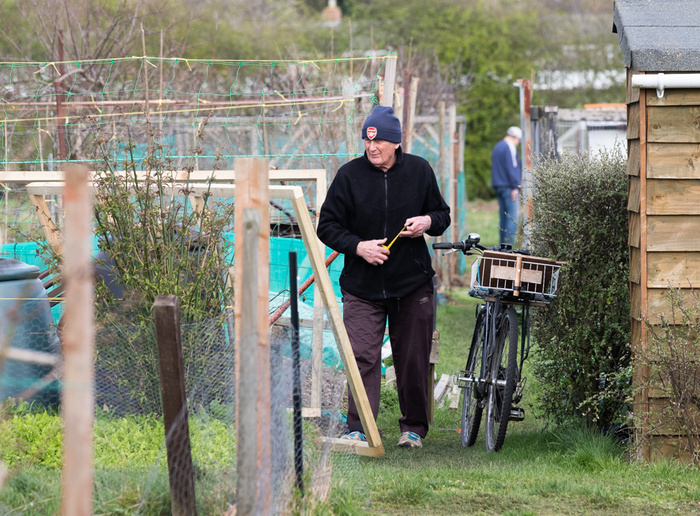
It may have been just imagination, but there seemed to be quite a heightened level of activity on site during the course of the last week. There were many familiar faces and quite a few new. To all the new plot holders a warm Melbourne Park Allotment welcome and hope you get the maximum from your efforts. There are already some impressive looking starts, and considerable colour on display around the site.
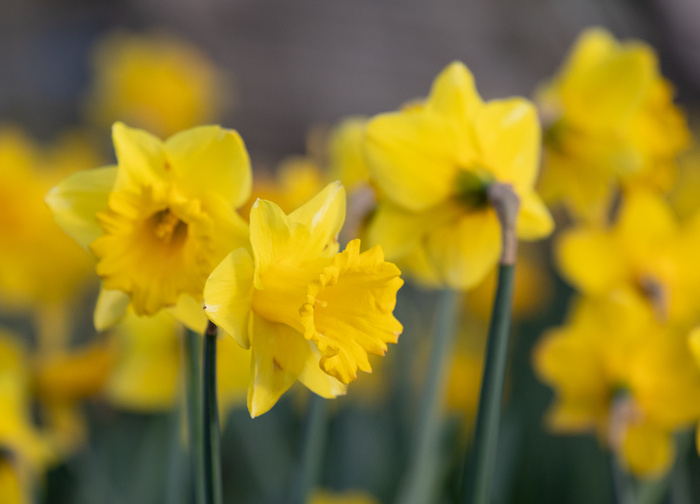
As we are all aware the country is facing a pandemic, and the government are taking extra ordinary steps to tackle. There are notices on the trading hut and in the cabin, and take the time to remind everyone to be mindful of others and respect the difficult situation we all find. This also applies in relation to how we tackle the trading hut and purchases, and would again ask everyone to be especially mindful in relation to social distancing and how we conduct ourselves so we may endeavour to keep everything ticking over.
On a brighter note the trading hut has taken in a new stock of timber, and various other purchases ready for the growing season and is open on Saturday and Sunday as usual. In terms of the website, we will be following the progress of The Three Allotmenteers (Alex, Kevin and Ian) again, and are hoping to publish some information from newer members in terms of their progress. An update from Project 63 should be expected, and one or two of our more established plot holders have offered up some insights about their time on the Allotment.
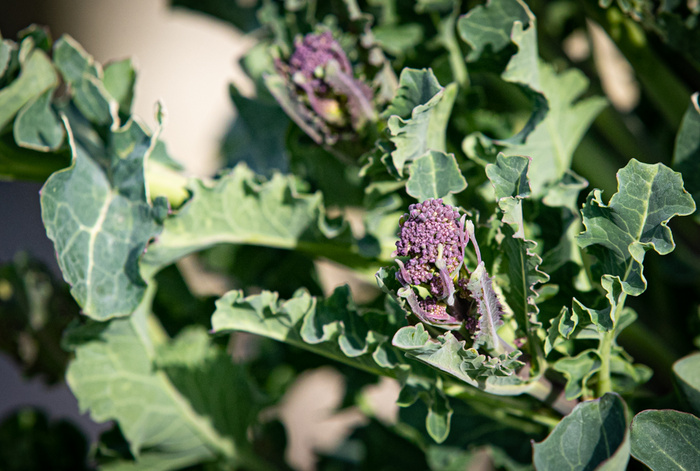
A big thank you to Peter Hunnable who has mown all round the trading hut and cabin, and Kevin Baskill who has given the Community Orchard an early trim. Don't forget to check into Alex's (The Essex Allotment) you tube channel too.
We understand from the Council the water supply will be re connected on or around the 6th April and in the meantime trust everyone is well.
20th March 2020
In: General News

It may have been just imagination, but there seemed to be quite a heightened level of activity on site during the course of the last week. There were many familiar faces and quite a few new. To all the new plot holders a warm Melbourne Park Allotment welcome and hope you get the maximum from your efforts. There are already some impressive looking starts, and considerable colour on display around the site.

As we are all aware the country is facing a pandemic, and the government are taking extra ordinary steps to tackle. There are notices on the trading hut and in the cabin, and take the time to remind everyone to be mindful of others and respect the difficult situation we all find. This also applies in relation to how we tackle the trading hut and purchases, and would again ask everyone to be especially mindful in relation to social distancing and how we conduct ourselves so we may endeavour to keep everything ticking over.
On a brighter note the trading hut has taken in a new stock of timber, and various other purchases ready for the growing season and is open on Saturday and Sunday as usual. In terms of the website, we will be following the progress of The Three Allotmenteers (Alex, Kevin and Ian) again, and are hoping to publish some information from newer members in terms of their progress. An update from Project 63 should be expected, and one or two of our more established plot holders have offered up some insights about their time on the Allotment.

A big thank you to Peter Hunnable who has mown all round the trading hut and cabin, and Kevin Baskill who has given the Community Orchard an early trim. Don't forget to check into Alex's (The Essex Allotment) you tube channel too.
We understand from the Council the water supply will be re connected on or around the 6th April and in the meantime trust everyone is well.
Mobile Phone Found
18th March 2020
Please be guided a mobile phone has been found and handed in on the Allotment site today. If you believe you have lost a phone and it may belong to you, please contact Karen Lawrence with details of the device, manufacturer etc.
18th March 2020
In: General News
Please be guided a mobile phone has been found and handed in on the Allotment site today. If you believe you have lost a phone and it may belong to you, please contact Karen Lawrence with details of the device, manufacturer etc.
Timber Delivery
17th March 2020
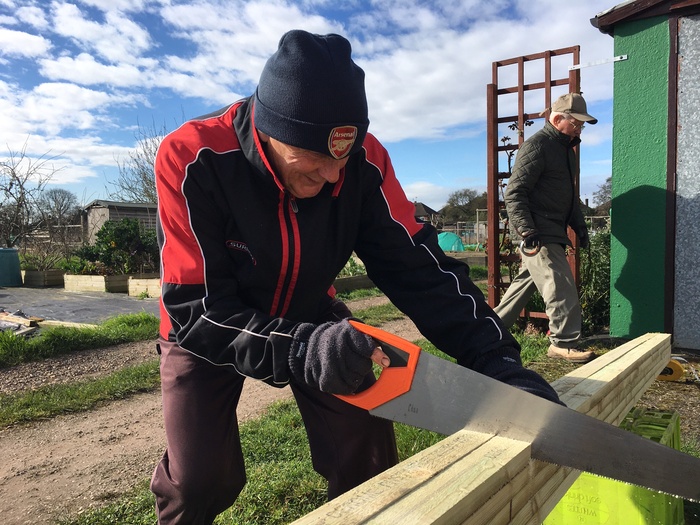
The Association took delivery of it's latest order of Timber this morning. Available in various sizes, 2x2, 2x1 and 1.5x1 all at 8ft in length (big apologies for those who operate in metric).
The Timber arrives in 16ft lengths and is sawn for storage and sale at the trading hut. The Association can also order decking if required, please enquire.
A big thank you to Richard Harris who stopped by and helped cut all the wood for the trading hut this morning.
17th March 2020
In: General News

The Association took delivery of it's latest order of Timber this morning. Available in various sizes, 2x2, 2x1 and 1.5x1 all at 8ft in length (big apologies for those who operate in metric).
The Timber arrives in 16ft lengths and is sawn for storage and sale at the trading hut. The Association can also order decking if required, please enquire.
A big thank you to Richard Harris who stopped by and helped cut all the wood for the trading hut this morning.
March To Do
13th March 2020
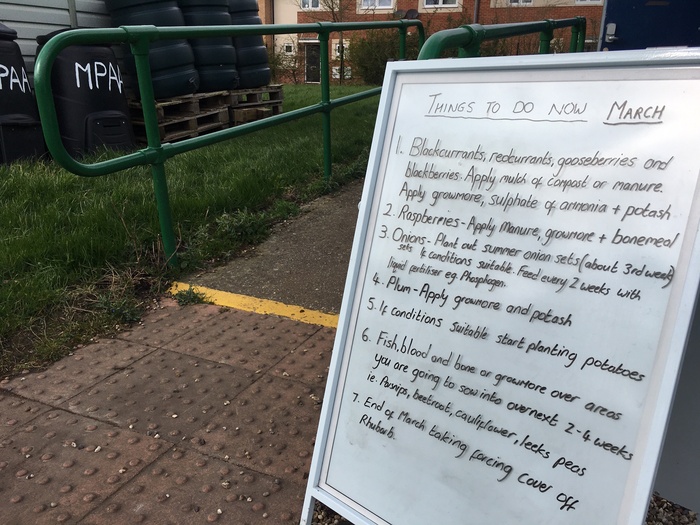
The March to do article is a little behind schedule. However, the overwhelmingly wet conditions have meant precious few days have been available on the plot, and there have been times where the amount of water laying around the site on the pathways has been greater than most of us can remember. Even the ditch at the base of the site has flowing water (almost a stream) which is highly unusual as it is normally just a dry hollow.
January, February and early March are usually reserved for soil improvement, maintenance and other practical activities for the plot. March (especially at the authors house) witnesses the general taking up of all window sill space and any other spare areas with seed and propagation trays for the growing periods ahead.
Karen's notes on this site (Allotment Year page) provide a whole host of items which would traditionally be undertaken, and it is important to note this is a personal aide memoire in terms of things to do. There is usually a whiteboard at the top of the site by the trading hut with a rather more condensed set of suggestions for the month. Hopefully the weather will improve as the days lengthen, and without wishing to be the signal of doom and gloom, don't forget we had some harsh frosts last year beyond the end of March, so fruit, vegetables or other which may be susceptible to cold may require a little protection.
13th March 2020
In: Features

The March to do article is a little behind schedule. However, the overwhelmingly wet conditions have meant precious few days have been available on the plot, and there have been times where the amount of water laying around the site on the pathways has been greater than most of us can remember. Even the ditch at the base of the site has flowing water (almost a stream) which is highly unusual as it is normally just a dry hollow.
January, February and early March are usually reserved for soil improvement, maintenance and other practical activities for the plot. March (especially at the authors house) witnesses the general taking up of all window sill space and any other spare areas with seed and propagation trays for the growing periods ahead.
Karen's notes on this site (Allotment Year page) provide a whole host of items which would traditionally be undertaken, and it is important to note this is a personal aide memoire in terms of things to do. There is usually a whiteboard at the top of the site by the trading hut with a rather more condensed set of suggestions for the month. Hopefully the weather will improve as the days lengthen, and without wishing to be the signal of doom and gloom, don't forget we had some harsh frosts last year beyond the end of March, so fruit, vegetables or other which may be susceptible to cold may require a little protection.
February To Do
13th February 2020
February tends not to be blessed with the greatest of weather, and this year is no exception. Despite not being quite as chilly, storm Clara and now Dennis are racing through, making the conditions unattractive on the plot.
This month as last though is not without important tasks which need to be completed, and a selection of potential 'To Do's' taken from Karen's allotment diary may prove to be a helpful nudge in the right direction. The list of course is not exhaustive, and remains a personal aide memoire, and it may just prove useful to others too.
There are a host of on line resources which may also be of assistance and don't forget to follow our very own Alex Horne - AKA #the_essex_allotment on you tube or Instagram. Alex's You Tube channel provides a regular update on what he is up to on his plot, including early sowing tips etc......
1. Any areas needing lime complete by end of February e.g. Brassica, swedes, French Beans and runner beans.
2. Plant shallots providing soil is not too wet, can plant from Nov- March
3. Black polythene where going to plant potatoes
4. Potash around garlic
5. Cut thyme to 9”
6. Put early potatoes already chitted into bags in polytunnel, if not done so
7. Start dahlias off in compost in greenhouse to take cuttings
8. Third week- apples-Apply potash 6” from trunk and 12” beyond tips of branches. Cooking apples need less than desert
9. Apples apply sulphate of ammonia 1 1/2oz per sq. m and growmore up to 4oz
10. Apples apply super-phosphate every 3 years 1 ½-2 oz. per sqm
11. Beginning of Feb apply garlic powder where you are to grow onions.
12. Put lettuce out under fleece and cloche or in greenhouse
13. Cut autumn raspberries down to ground (all stems)
14. Plant some potatoes 6” below soil level under cloches
15. Warm area for spring onion with cloche/fleece
16. Early Feb 1 /4 oz potash and 1 ¾ oz nitro chalk or sulphate of ammonia around Cherry and every 3rd year 2 ½ oz superphosphate all per sq yard
17. Sulphate of ammonia around each blueberry
18. 26th Rhubarb apply dressing of sulphate of ammonia 2 oz sq m (do not over feed)
19. Prune blueberries like black currents. Bushes fruit best on wood 1-4 years old. Cut back up to a quarter of the older wood. Thin weak shoots to stronger shoots. Cut just above a bud.
20. Prune/shear a small amount from lavender plants
21. Prune rosemary after flowering
22. Sow early carrots in greenbox in polytunnel
23. Late Feb apply growmore 2-3oz and nitrochalk to apricot
24. Liquid feed potatoes in bags in poly tunnel
25. Late Feb sow peas for shoots in modules , plant outside under fleece
13th February 2020
In: General News
February tends not to be blessed with the greatest of weather, and this year is no exception. Despite not being quite as chilly, storm Clara and now Dennis are racing through, making the conditions unattractive on the plot.
This month as last though is not without important tasks which need to be completed, and a selection of potential 'To Do's' taken from Karen's allotment diary may prove to be a helpful nudge in the right direction. The list of course is not exhaustive, and remains a personal aide memoire, and it may just prove useful to others too.
There are a host of on line resources which may also be of assistance and don't forget to follow our very own Alex Horne - AKA #the_essex_allotment on you tube or Instagram. Alex's You Tube channel provides a regular update on what he is up to on his plot, including early sowing tips etc......
1. Any areas needing lime complete by end of February e.g. Brassica, swedes, French Beans and runner beans.
2. Plant shallots providing soil is not too wet, can plant from Nov- March
3. Black polythene where going to plant potatoes
4. Potash around garlic
5. Cut thyme to 9”
6. Put early potatoes already chitted into bags in polytunnel, if not done so
7. Start dahlias off in compost in greenhouse to take cuttings
8. Third week- apples-Apply potash 6” from trunk and 12” beyond tips of branches. Cooking apples need less than desert
9. Apples apply sulphate of ammonia 1 1/2oz per sq. m and growmore up to 4oz
10. Apples apply super-phosphate every 3 years 1 ½-2 oz. per sqm
11. Beginning of Feb apply garlic powder where you are to grow onions.
12. Put lettuce out under fleece and cloche or in greenhouse
13. Cut autumn raspberries down to ground (all stems)
14. Plant some potatoes 6” below soil level under cloches
15. Warm area for spring onion with cloche/fleece
16. Early Feb 1 /4 oz potash and 1 ¾ oz nitro chalk or sulphate of ammonia around Cherry and every 3rd year 2 ½ oz superphosphate all per sq yard
17. Sulphate of ammonia around each blueberry
18. 26th Rhubarb apply dressing of sulphate of ammonia 2 oz sq m (do not over feed)
19. Prune blueberries like black currents. Bushes fruit best on wood 1-4 years old. Cut back up to a quarter of the older wood. Thin weak shoots to stronger shoots. Cut just above a bud.
20. Prune/shear a small amount from lavender plants
21. Prune rosemary after flowering
22. Sow early carrots in greenbox in polytunnel
23. Late Feb apply growmore 2-3oz and nitrochalk to apricot
24. Liquid feed potatoes in bags in poly tunnel
25. Late Feb sow peas for shoots in modules , plant outside under fleece
Melbourne Park Allotment - a bit of History
04th February 2020
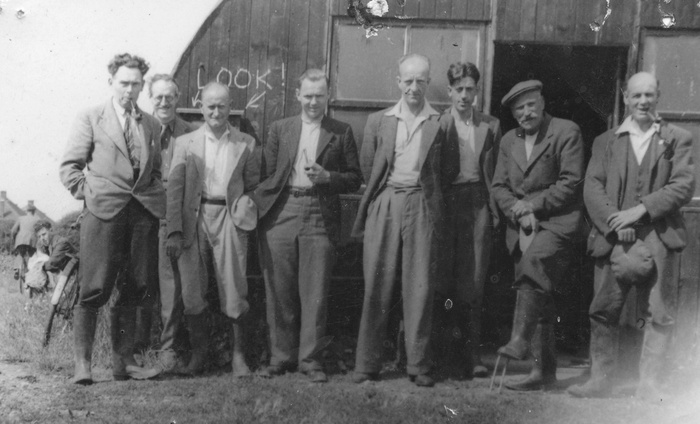
An image (we believe in the 50's) of an earlier trading hut with some of the plot holders - including a young Arthur Cornell
The Allotment Association and trading hut in it's current format was established in 2003/4 after a period of dormancy through the late nineties. Arthur Cornell convinced various like minded individuals to get the Association back together, form a committee and re open the trading activities for the benefit of all.
In addition to this, Arthur, Ada and Tony Holbrook had spent some time at the Essex Records Office tracing the history of the Allotments, which we can confirm reach back to 1938. The earliest mention to be found in the Council minutes surround the procurement of land from the land owners (Melbourne Park Estates) for the provision of allotments. Whilst there were some plots laid out at the Highfield Road end of the site, Arthur was one of the first twenty plot holders to take on an allotment on the expanded site in 1947.
Over the winter months we have continued to research the council records in relation to the site, which have heralded various interesting snippets of information, and we will try and recount some of these through future blog posts. The council records seem to dry up around 1969-1970 and we know the independent parks and allotment committee ceased around 1972.
Several of the plot holders who have tended plots at Melbourne since the 80's have kindly agreed to share their thoughts and stories from the site, and we will again with their blessing publish these during the year as a series of feature articles, which will hopefully compliment some of the stories from newer members and our current activities.
As we have quite a number of new members to the Association, we thought it would be a good idea to re publish an article first produced in 2009. Tony Holbrook interviewed Arthur in relation to his time on the plot and these notes can be read by following the attached link. They make very interesting reading.
Interview Arthur Cornell
04th February 2020
In: Features

An image (we believe in the 50's) of an earlier trading hut with some of the plot holders - including a young Arthur Cornell
The Allotment Association and trading hut in it's current format was established in 2003/4 after a period of dormancy through the late nineties. Arthur Cornell convinced various like minded individuals to get the Association back together, form a committee and re open the trading activities for the benefit of all.
In addition to this, Arthur, Ada and Tony Holbrook had spent some time at the Essex Records Office tracing the history of the Allotments, which we can confirm reach back to 1938. The earliest mention to be found in the Council minutes surround the procurement of land from the land owners (Melbourne Park Estates) for the provision of allotments. Whilst there were some plots laid out at the Highfield Road end of the site, Arthur was one of the first twenty plot holders to take on an allotment on the expanded site in 1947.
Over the winter months we have continued to research the council records in relation to the site, which have heralded various interesting snippets of information, and we will try and recount some of these through future blog posts. The council records seem to dry up around 1969-1970 and we know the independent parks and allotment committee ceased around 1972.
Several of the plot holders who have tended plots at Melbourne since the 80's have kindly agreed to share their thoughts and stories from the site, and we will again with their blessing publish these during the year as a series of feature articles, which will hopefully compliment some of the stories from newer members and our current activities.
As we have quite a number of new members to the Association, we thought it would be a good idea to re publish an article first produced in 2009. Tony Holbrook interviewed Arthur in relation to his time on the plot and these notes can be read by following the attached link. They make very interesting reading.
Interview Arthur Cornell
Seed Potato - Setanta
03rd February 2020
Every year the Allotment Association orders seed potato, and this year is no exception. We are expecting to take delivery of the order on the 11th February, and we have some excess available on a first come first serve basis.
The variety is Setanta, which we have found to be reasonably blight resistant and crops well. For any or all new members who may not have been aware, or are considering vegetable crops, this present an opportunity to purchase directly from the trading hut in the knowledge many members are using this variety.
Reasonably priced at £2.80 for 2.5 kgs, enquire at the Trading Hut.
03rd February 2020
Every year the Allotment Association orders seed potato, and this year is no exception. We are expecting to take delivery of the order on the 11th February, and we have some excess available on a first come first serve basis.
The variety is Setanta, which we have found to be reasonably blight resistant and crops well. For any or all new members who may not have been aware, or are considering vegetable crops, this present an opportunity to purchase directly from the trading hut in the knowledge many members are using this variety.
Reasonably priced at £2.80 for 2.5 kgs, enquire at the Trading Hut.
January - To Do
04th January 2020
January and February are not the most favourable months in terms of weather conditions, the only positive following the winter solstice is the lengthening of daylight. However, as posted on Instagram ‘an allotment isn’t just for the summer’ and the colder winter months provides an opportunity for a host of activity to take place to ensure the maximum productivity throughout the year.
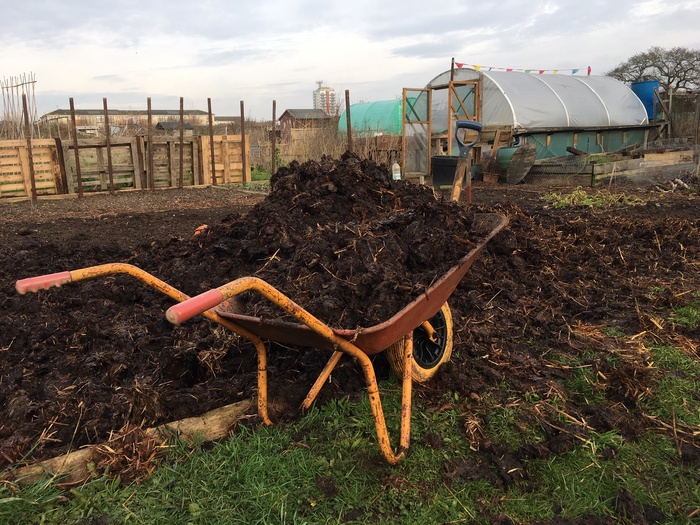
For those new plot holders, or those advocating and implementing a no dig method on their plot, the months represent a great time to lay a host of cardboard over the offending grass or weedy areas, and heavily compost or manure. This cuts off all the light to the affected areas, and deprived of light, the weeds become weaker, and can be gradually overcome.
For those traditional plot holders, the winter months are a good time to dig, or as Arthur used to express Double Dig the various areas, with the frost left to break up the soil.
It’s also a good time to deal with all those DIY tasks, from repairs to raised beds, compost and manure bins and any other general maintenance required.
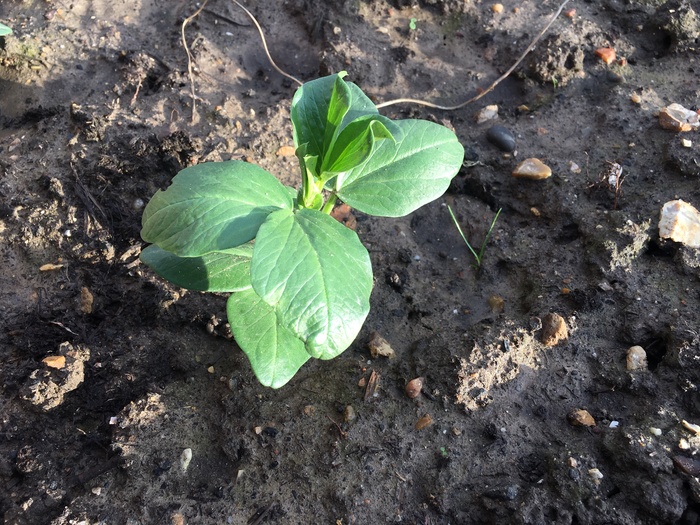
For many there are over wintering crops, which are already in such as garlic and onions, with other vegetables such as broad beans can still be started in modules inside, hardened off and then planted out – . Shallots can be planted, which allows them to split through frost. It is also a good time to plant any fruit trees (dwarf stock on the plots). Don’t forget after planting the fruit trees to apply a thick layer of organic matter around the base and away from the main stem to help prevent weeds and assist maintain soil moisture levels in warmer months.
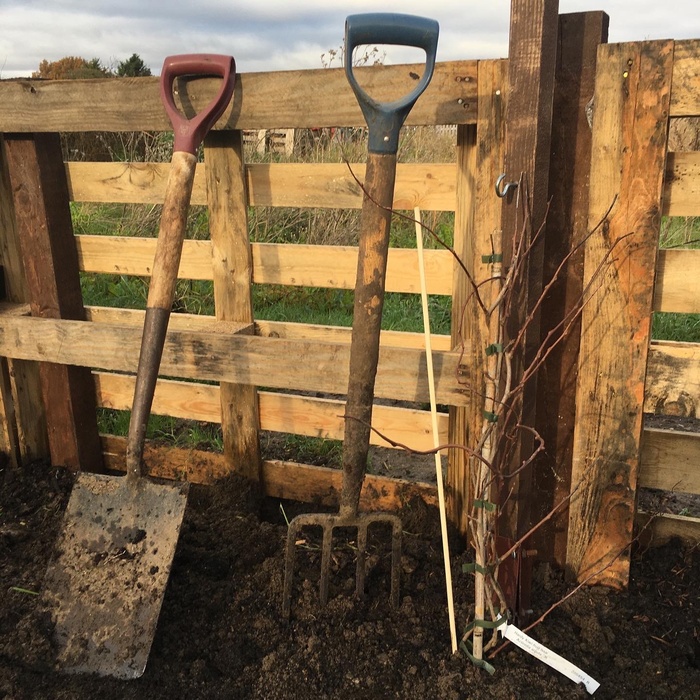
Currant bushes should be pruned, thinning out the very old, thin or any diseased growth and creating plenty of room for new vigorous growth. Rhubarb can be forced, and the next few weeks are a good time to dig the bean trenches and start to fill with organic matter.
The cold months are essentially a good time to plan where everything will be grown on the allotment space, together with timings for planting, whether this be starting seeds inside or direct to the plot, or order any seeds which may have been missed earlier.
Don't forget the trading hut re opens this Saturday, and presents an opportunity to pop in for a chat and buy your ‘beloved allotment warrior’ any provisions required, or a late Christmas present. (What better than a bag or two of compost to promote the growth of all that fine veg!!).
As a reminder you can also follow the exploits of Alex Horne and his plot on You Tube, and information on the Association web site where we are hoping various members are going to offer their thoughts during the year and allow us to follow their growing exploits. There is also a whiteboard in front of the cabin most weeks with a gentle hint in terms of potential tasks to be considered or completed.
Happy new growing year to all.
04th January 2020
In: Features
January and February are not the most favourable months in terms of weather conditions, the only positive following the winter solstice is the lengthening of daylight. However, as posted on Instagram ‘an allotment isn’t just for the summer’ and the colder winter months provides an opportunity for a host of activity to take place to ensure the maximum productivity throughout the year.

For those new plot holders, or those advocating and implementing a no dig method on their plot, the months represent a great time to lay a host of cardboard over the offending grass or weedy areas, and heavily compost or manure. This cuts off all the light to the affected areas, and deprived of light, the weeds become weaker, and can be gradually overcome.
For those traditional plot holders, the winter months are a good time to dig, or as Arthur used to express Double Dig the various areas, with the frost left to break up the soil.
It’s also a good time to deal with all those DIY tasks, from repairs to raised beds, compost and manure bins and any other general maintenance required.

For many there are over wintering crops, which are already in such as garlic and onions, with other vegetables such as broad beans can still be started in modules inside, hardened off and then planted out – . Shallots can be planted, which allows them to split through frost. It is also a good time to plant any fruit trees (dwarf stock on the plots). Don’t forget after planting the fruit trees to apply a thick layer of organic matter around the base and away from the main stem to help prevent weeds and assist maintain soil moisture levels in warmer months.

Currant bushes should be pruned, thinning out the very old, thin or any diseased growth and creating plenty of room for new vigorous growth. Rhubarb can be forced, and the next few weeks are a good time to dig the bean trenches and start to fill with organic matter.
The cold months are essentially a good time to plan where everything will be grown on the allotment space, together with timings for planting, whether this be starting seeds inside or direct to the plot, or order any seeds which may have been missed earlier.
Don't forget the trading hut re opens this Saturday, and presents an opportunity to pop in for a chat and buy your ‘beloved allotment warrior’ any provisions required, or a late Christmas present. (What better than a bag or two of compost to promote the growth of all that fine veg!!).
As a reminder you can also follow the exploits of Alex Horne and his plot on You Tube, and information on the Association web site where we are hoping various members are going to offer their thoughts during the year and allow us to follow their growing exploits. There is also a whiteboard in front of the cabin most weeks with a gentle hint in terms of potential tasks to be considered or completed.
Happy new growing year to all.